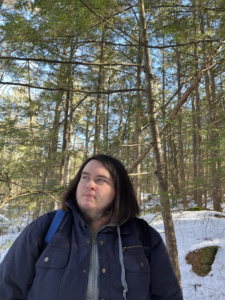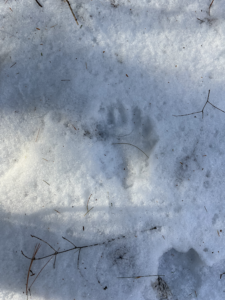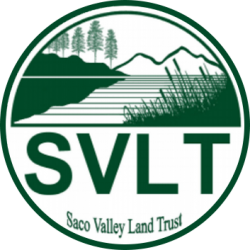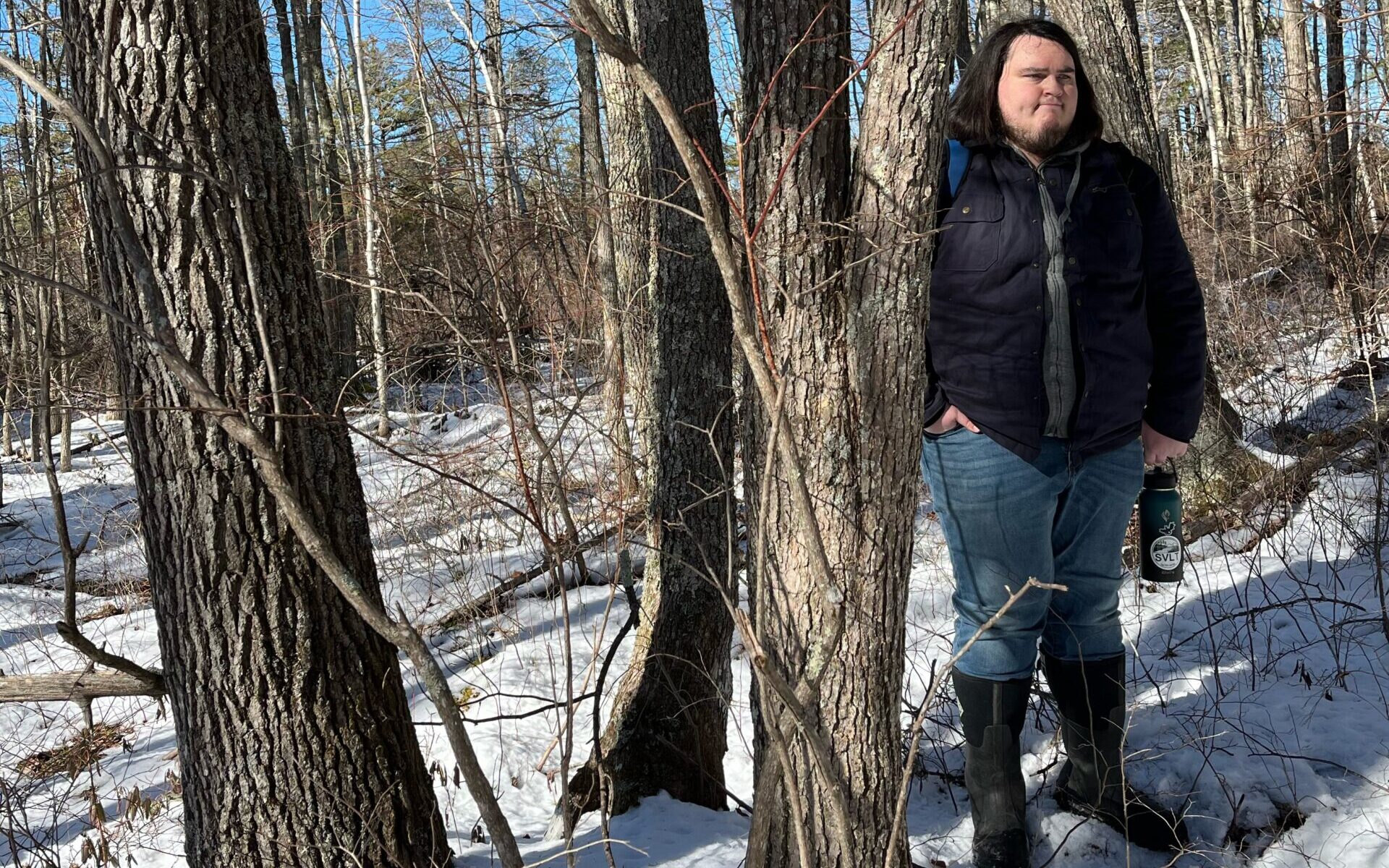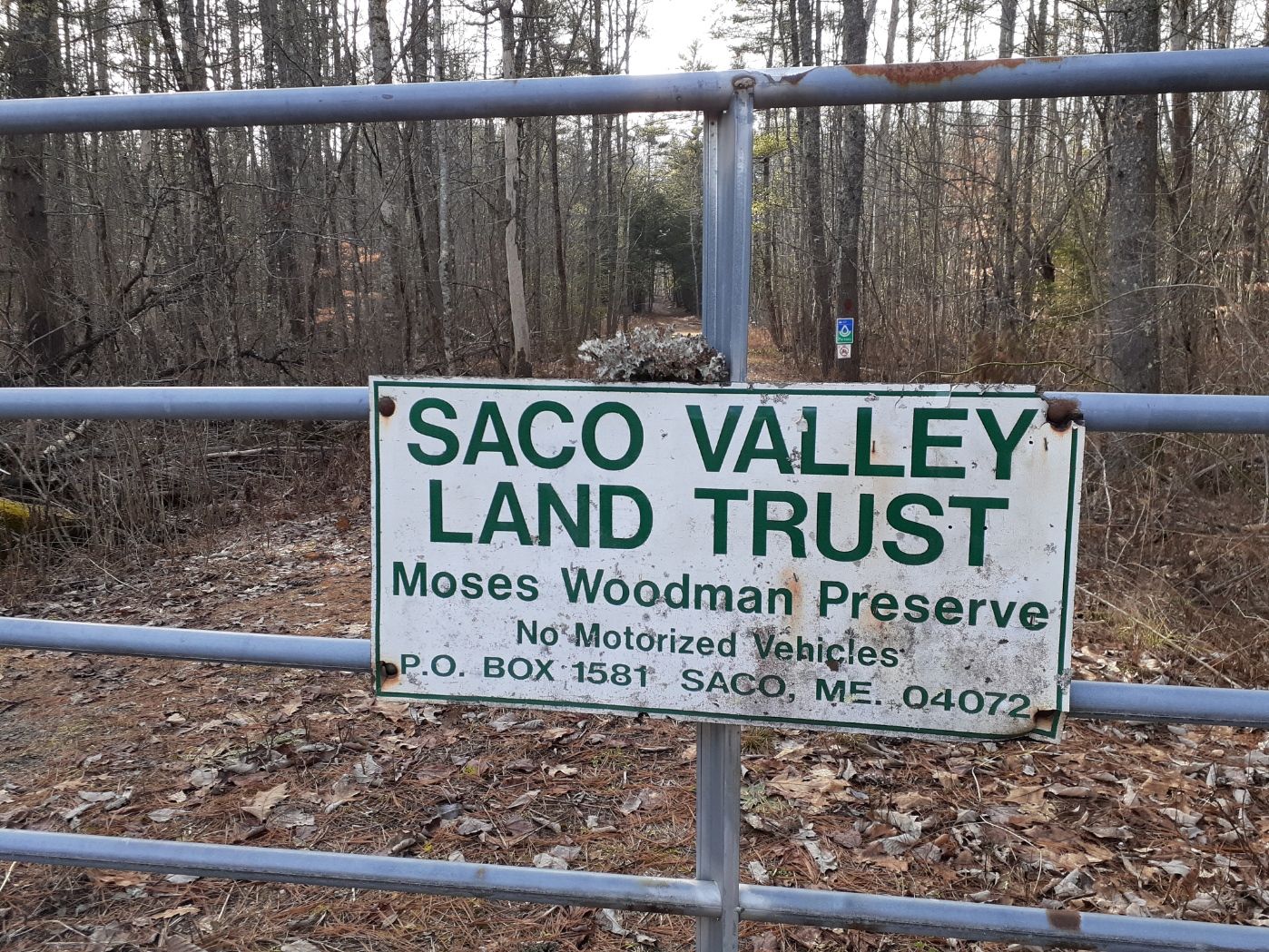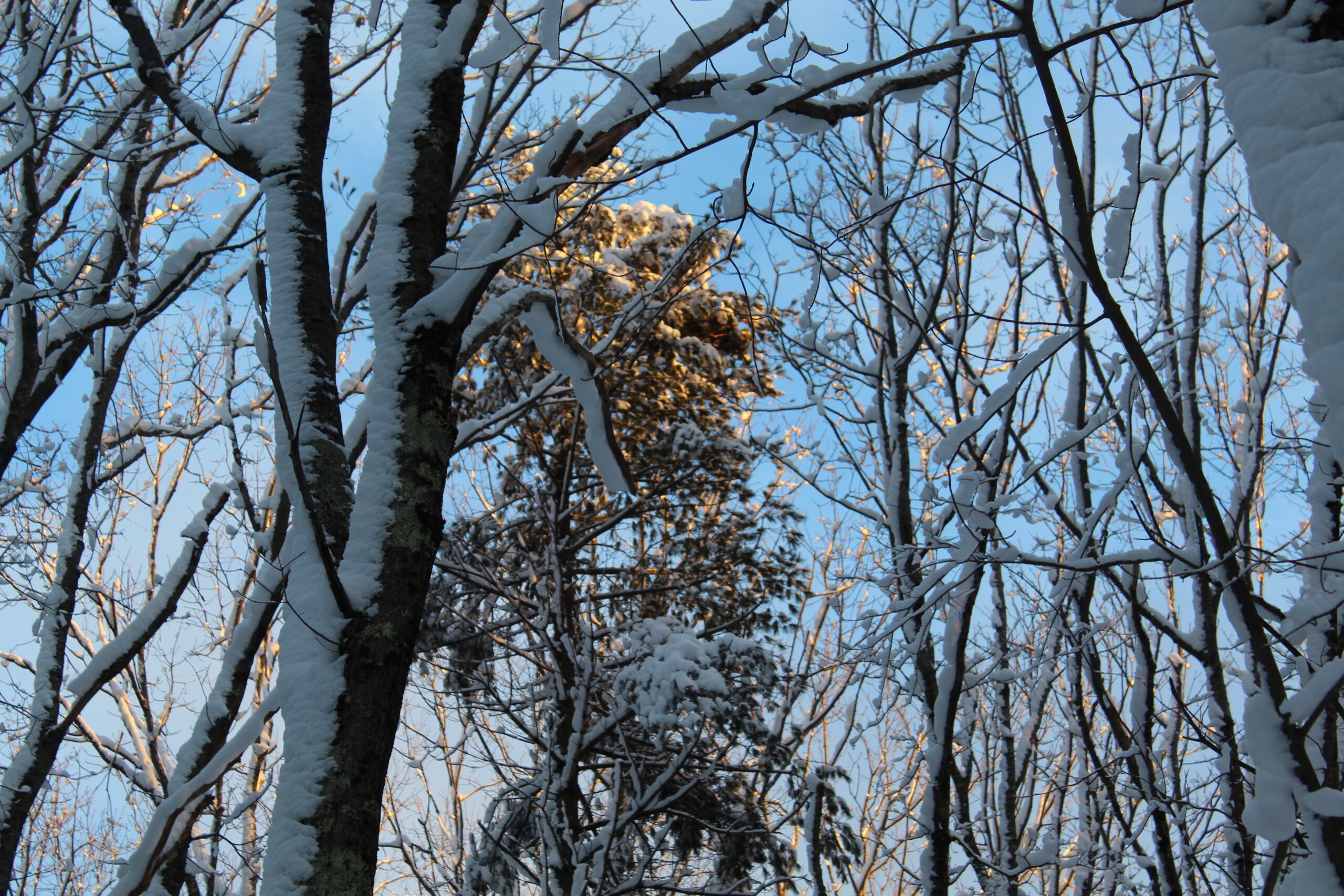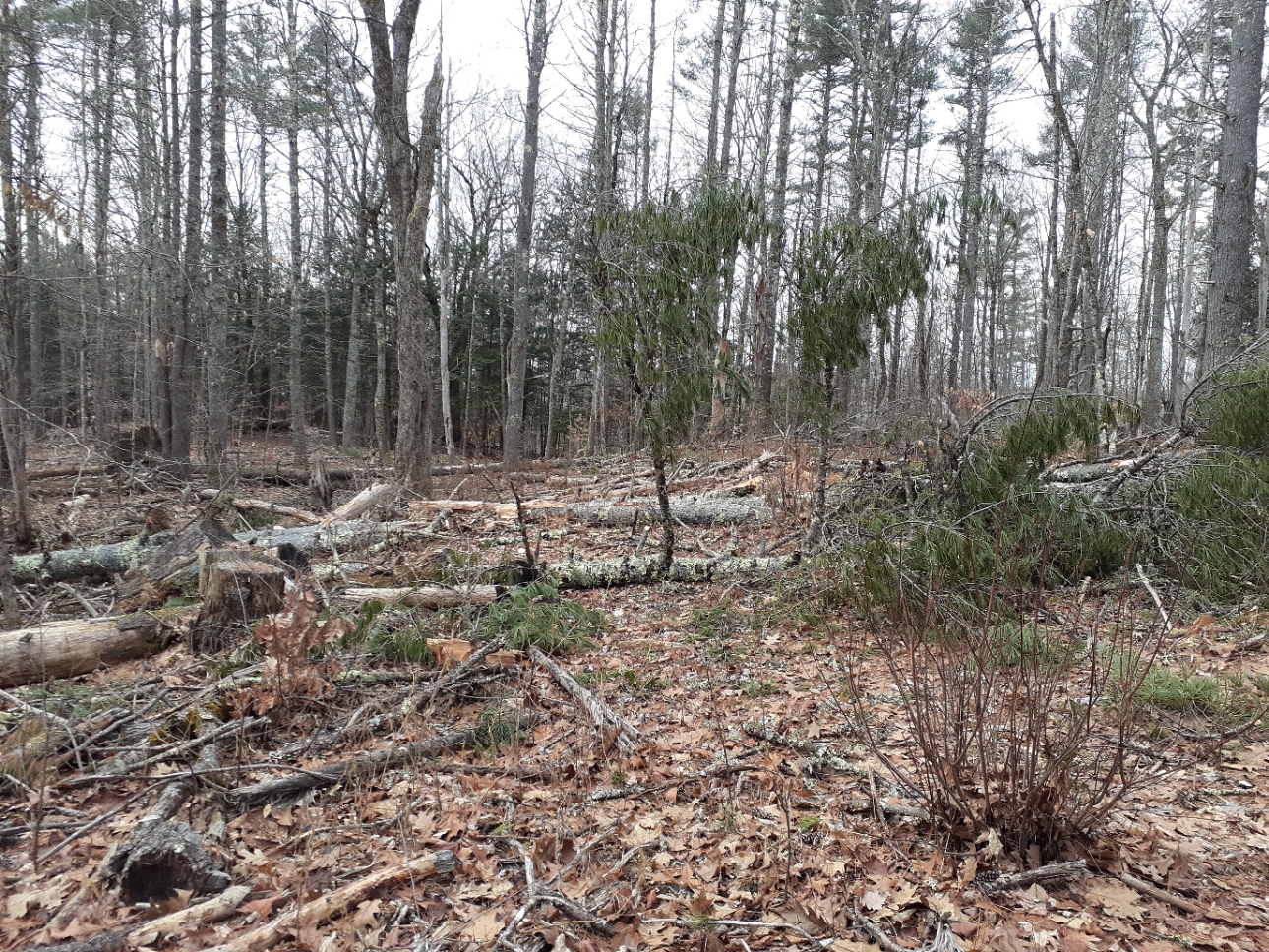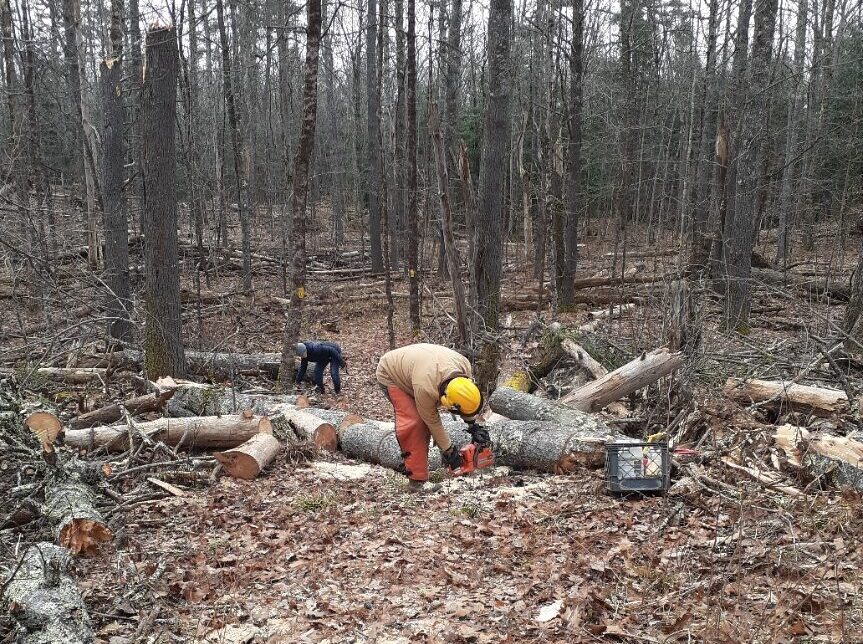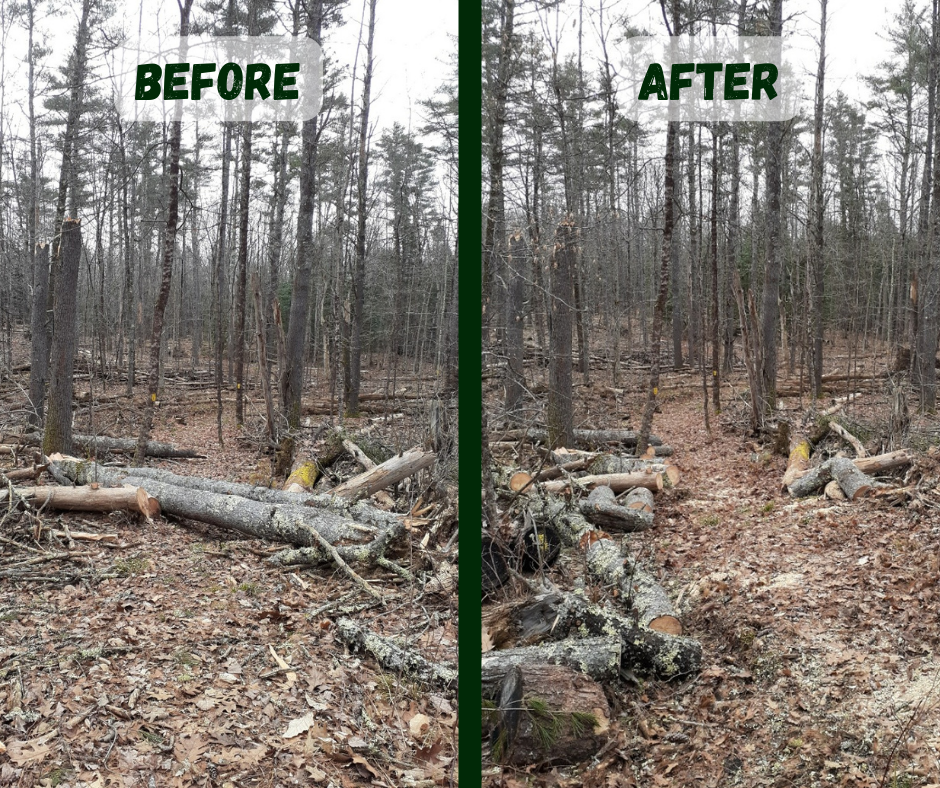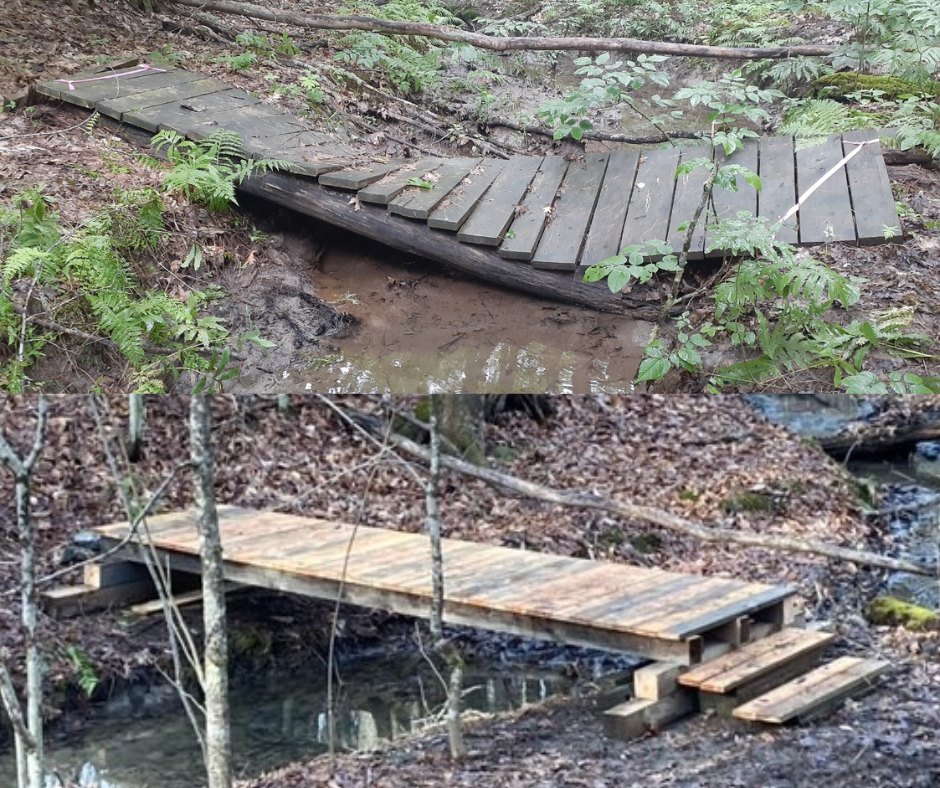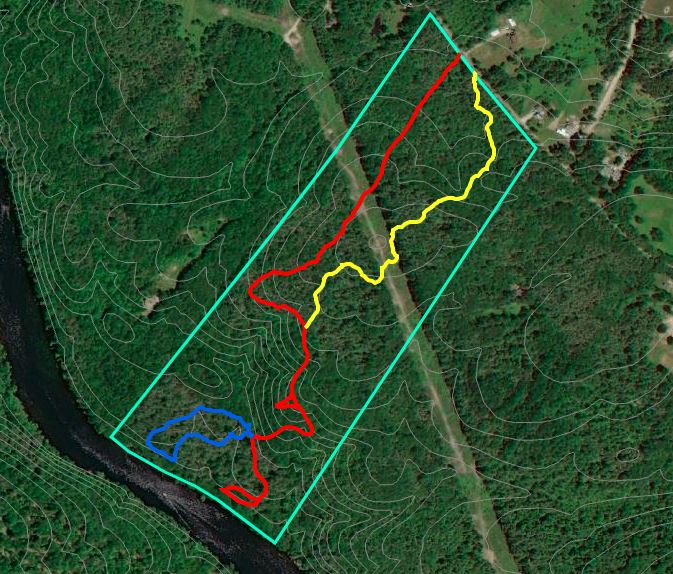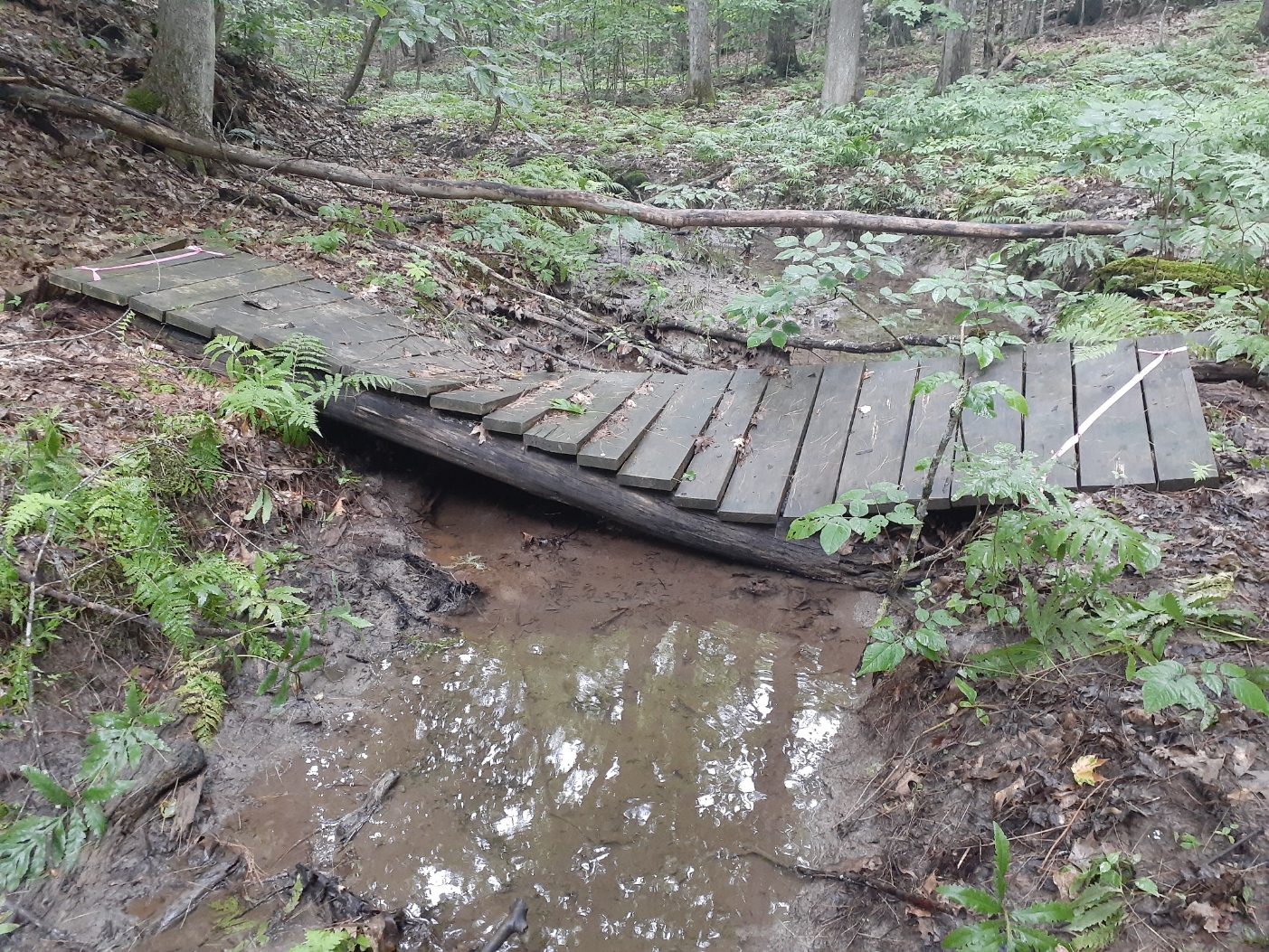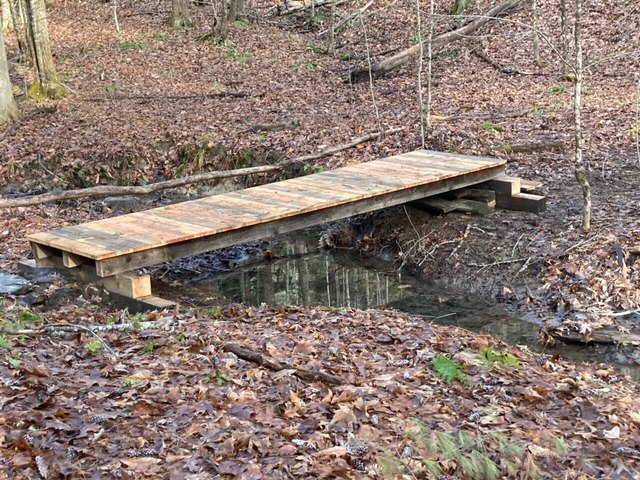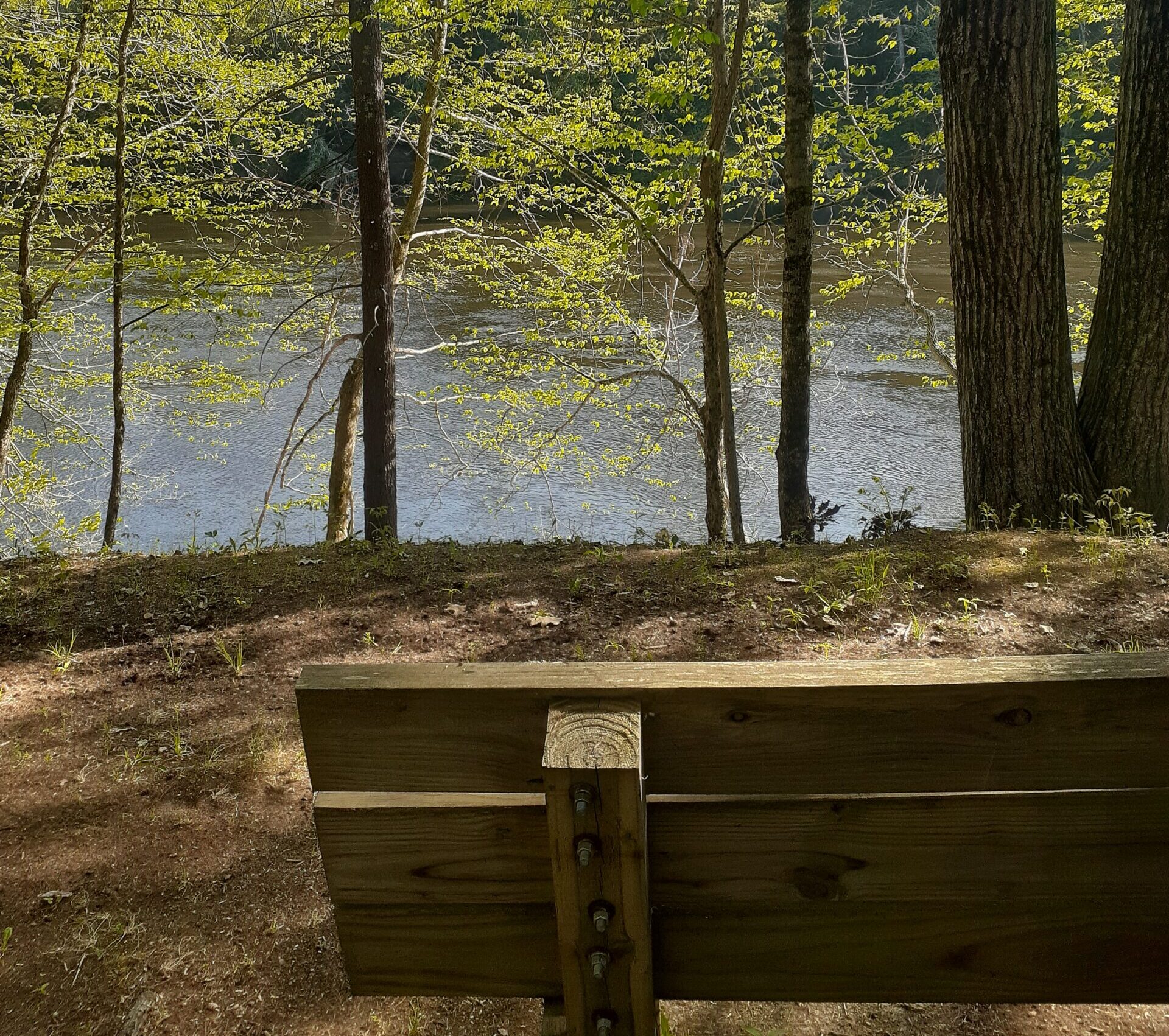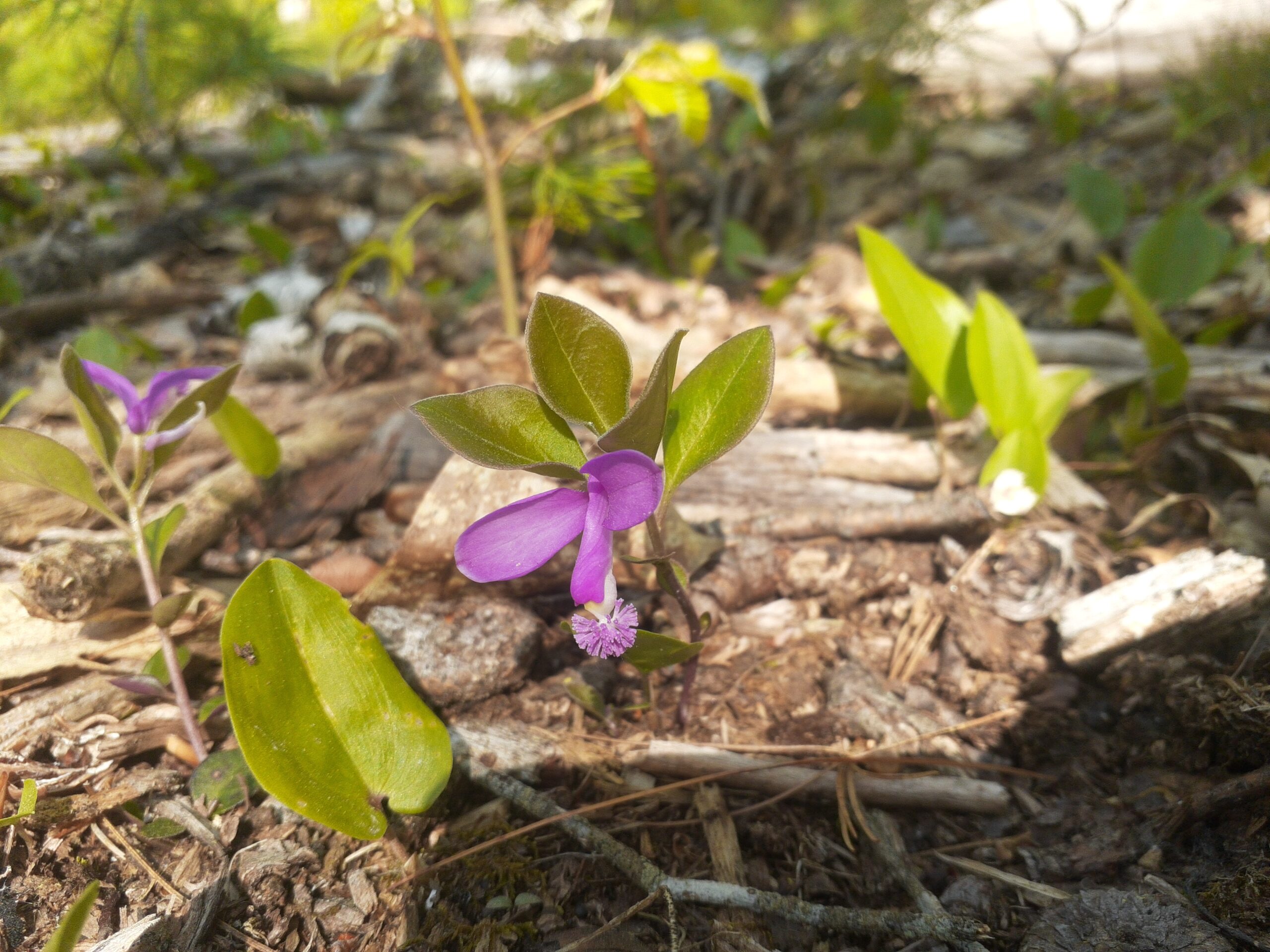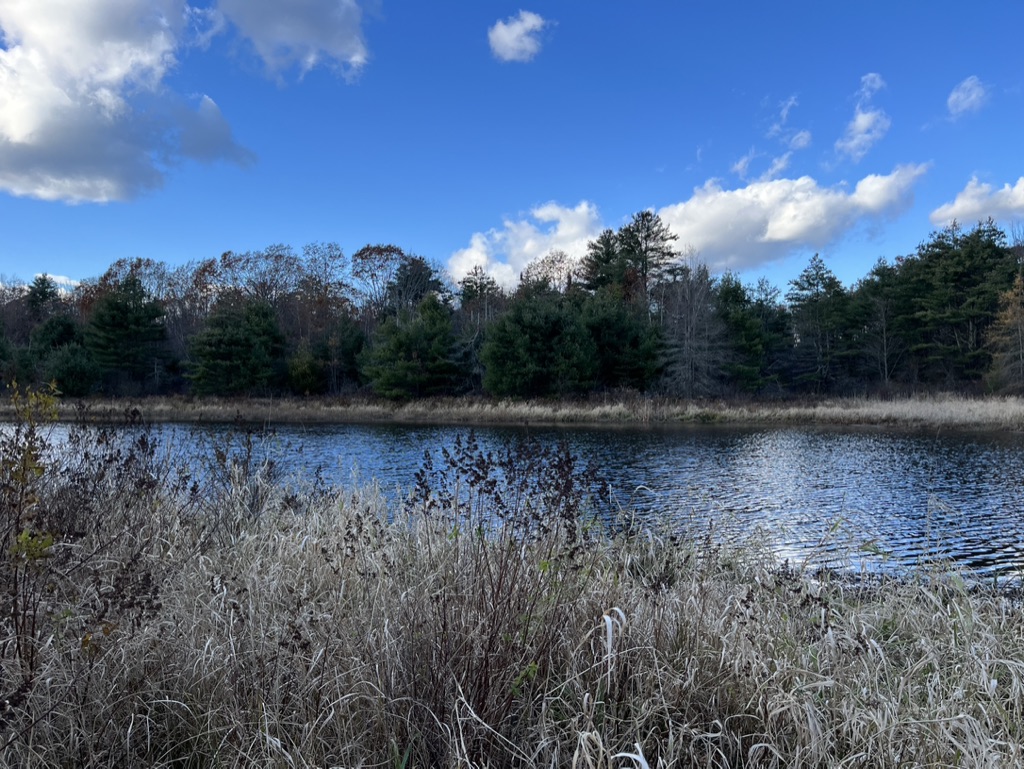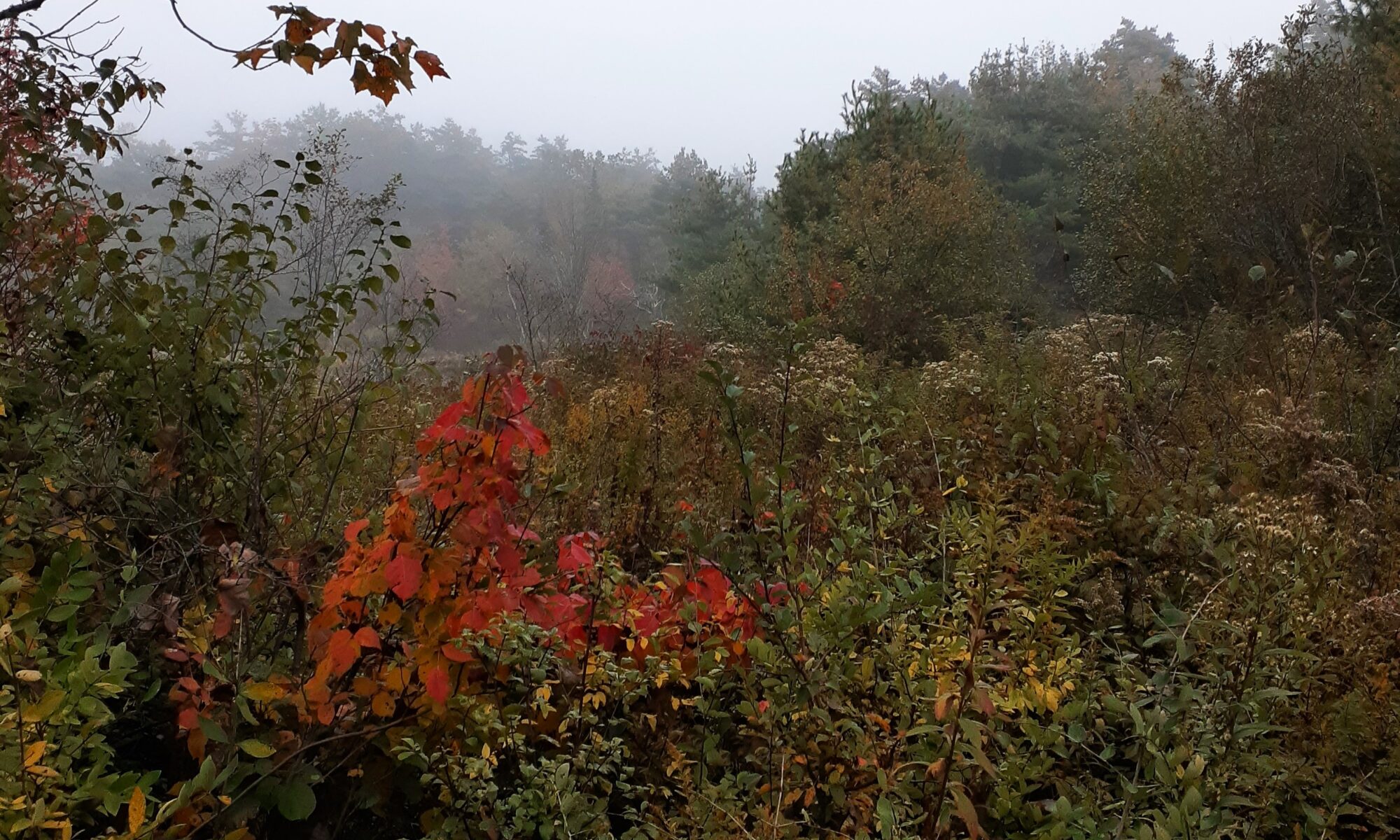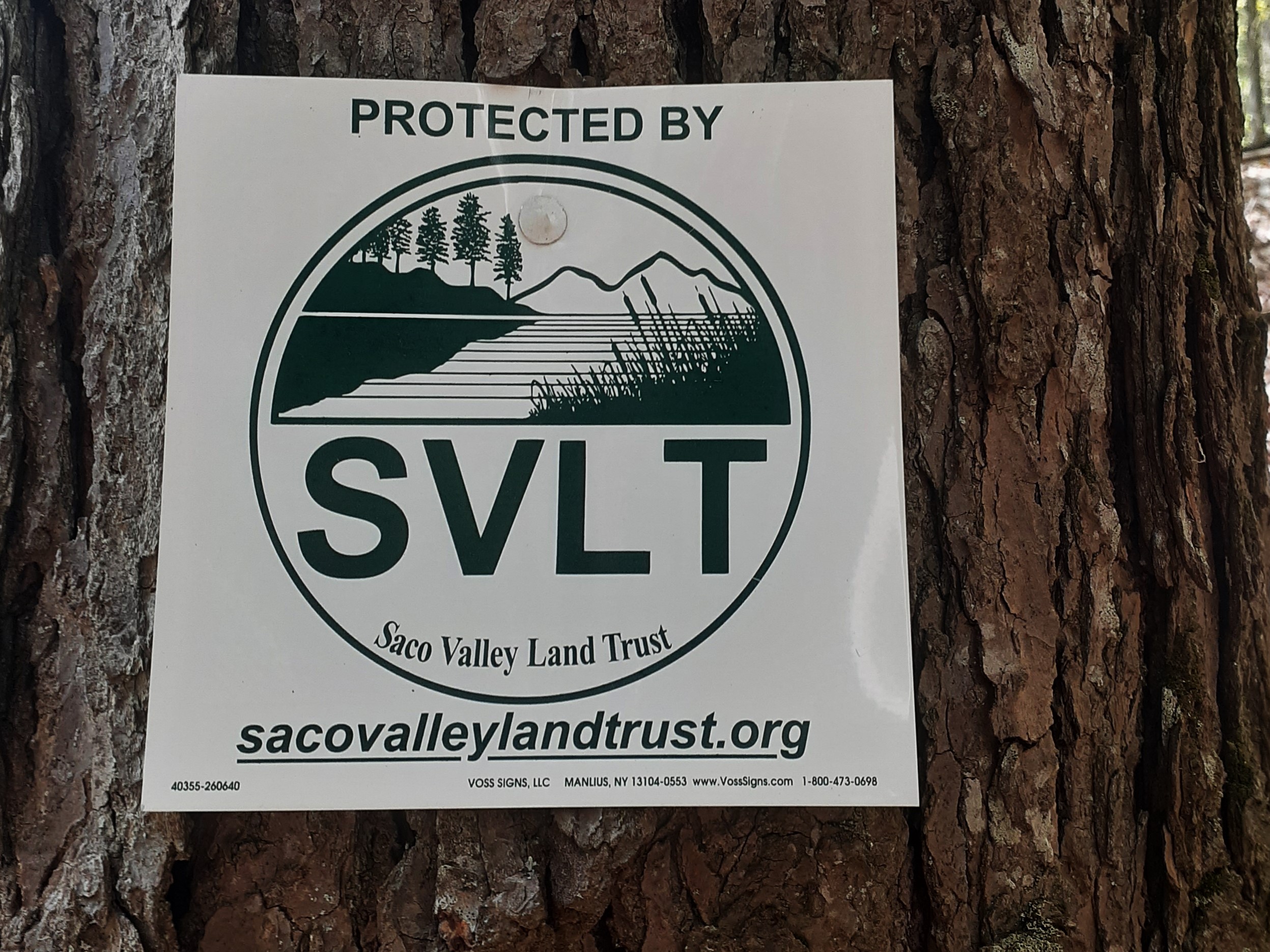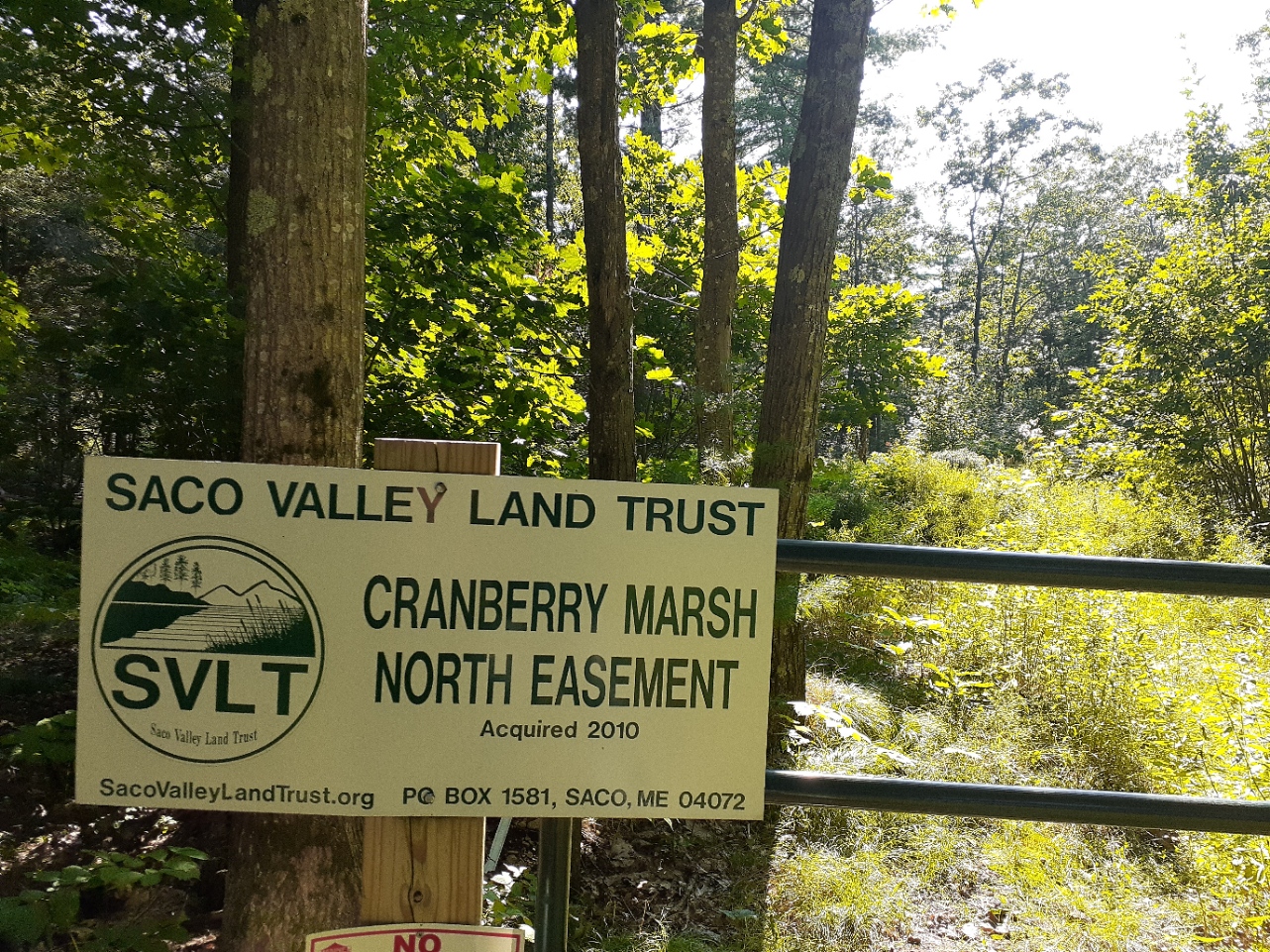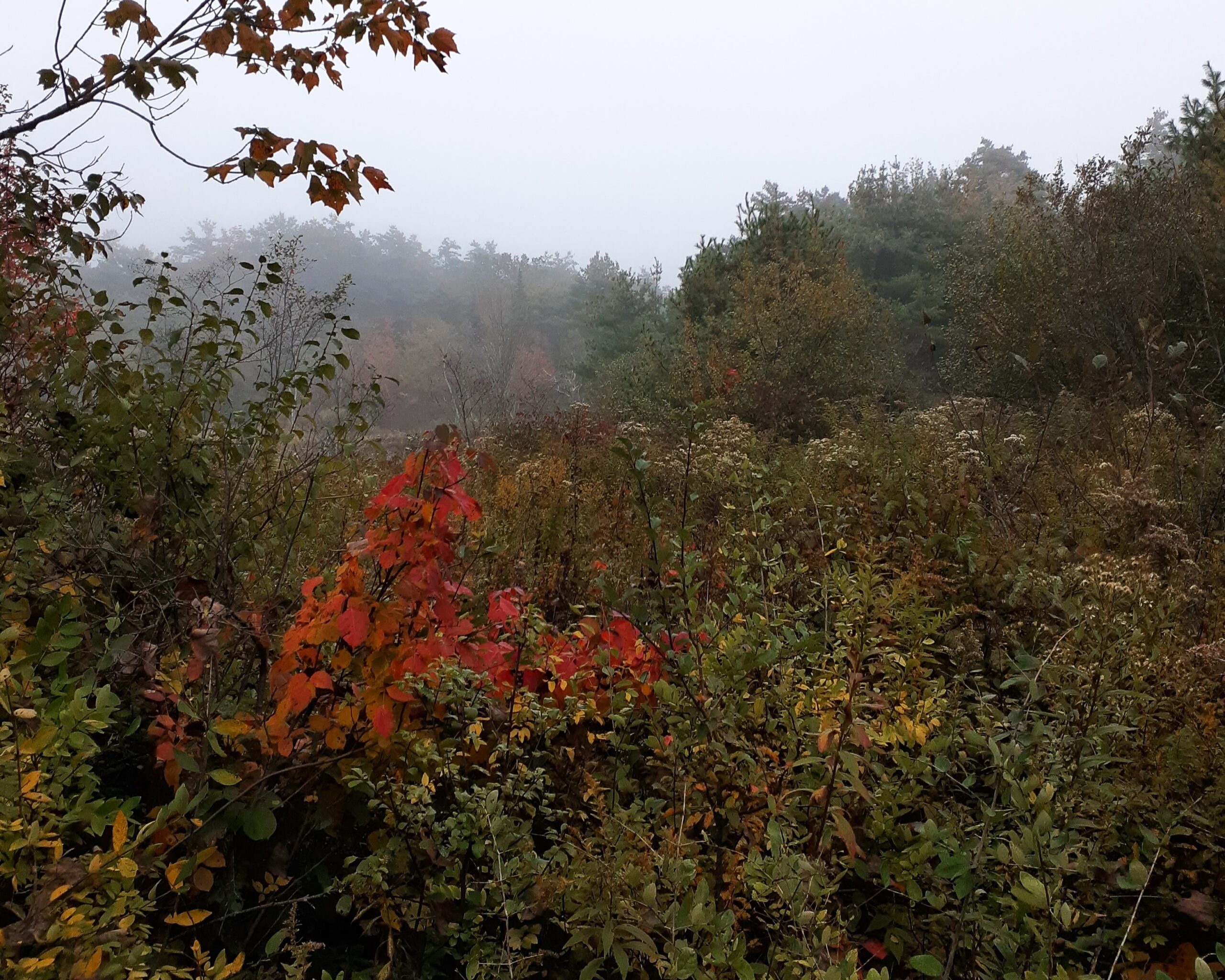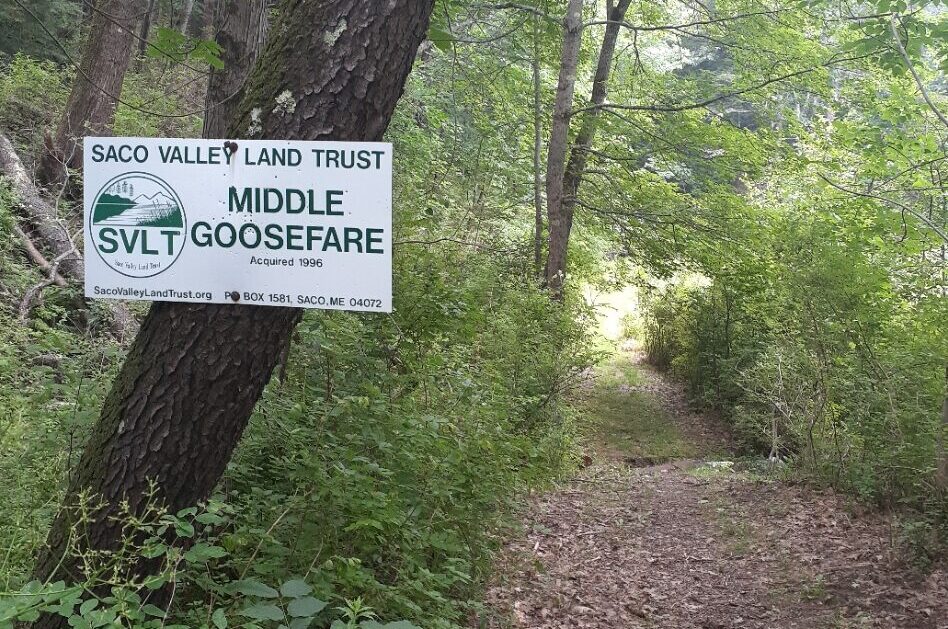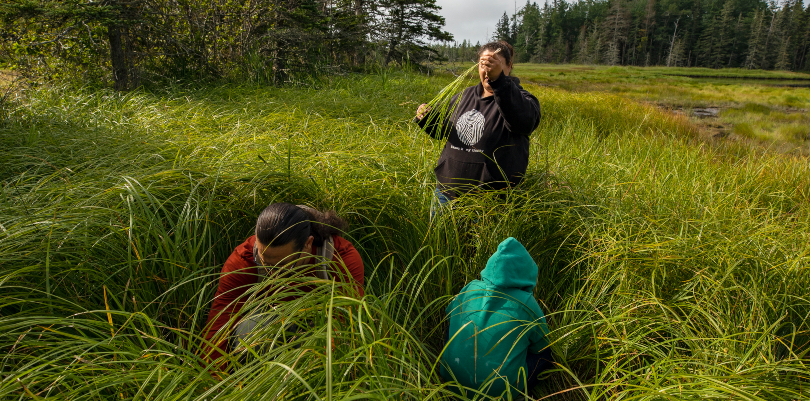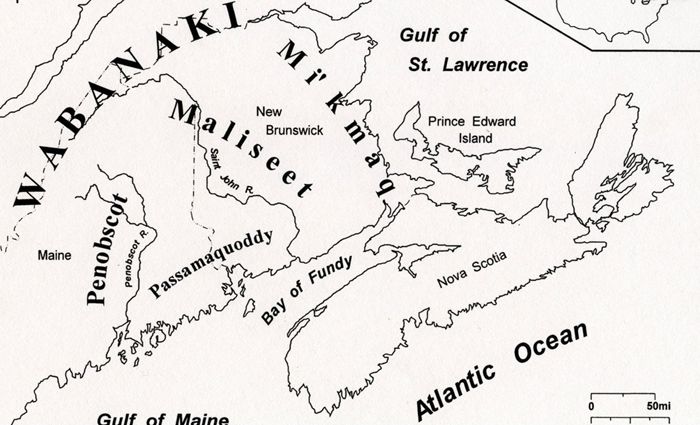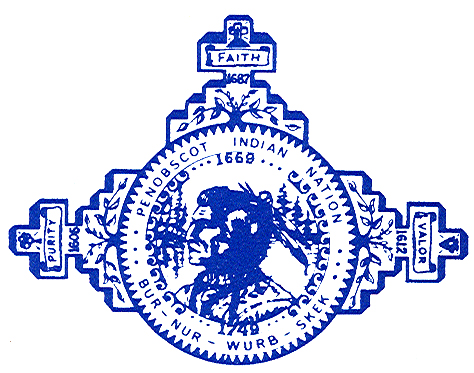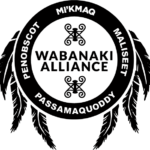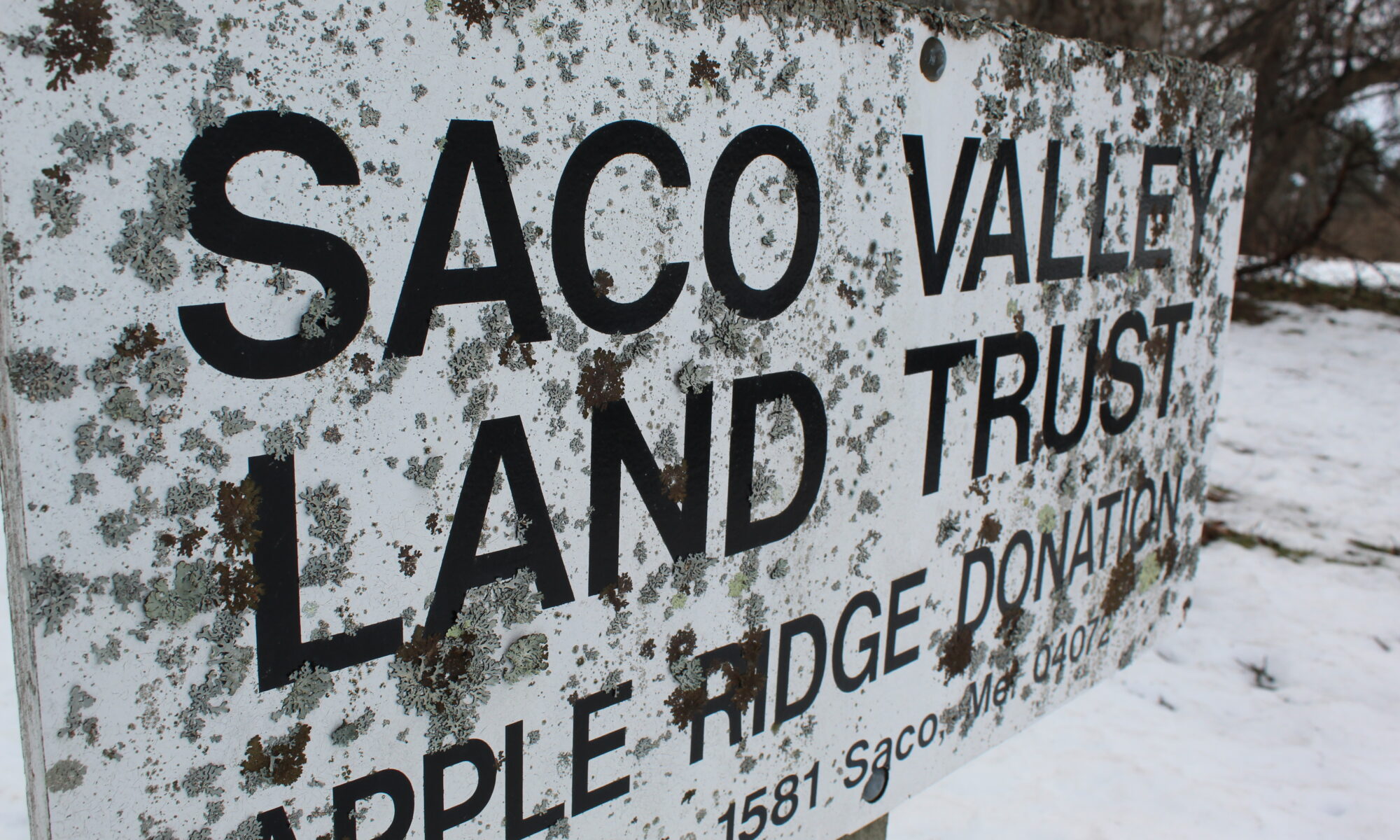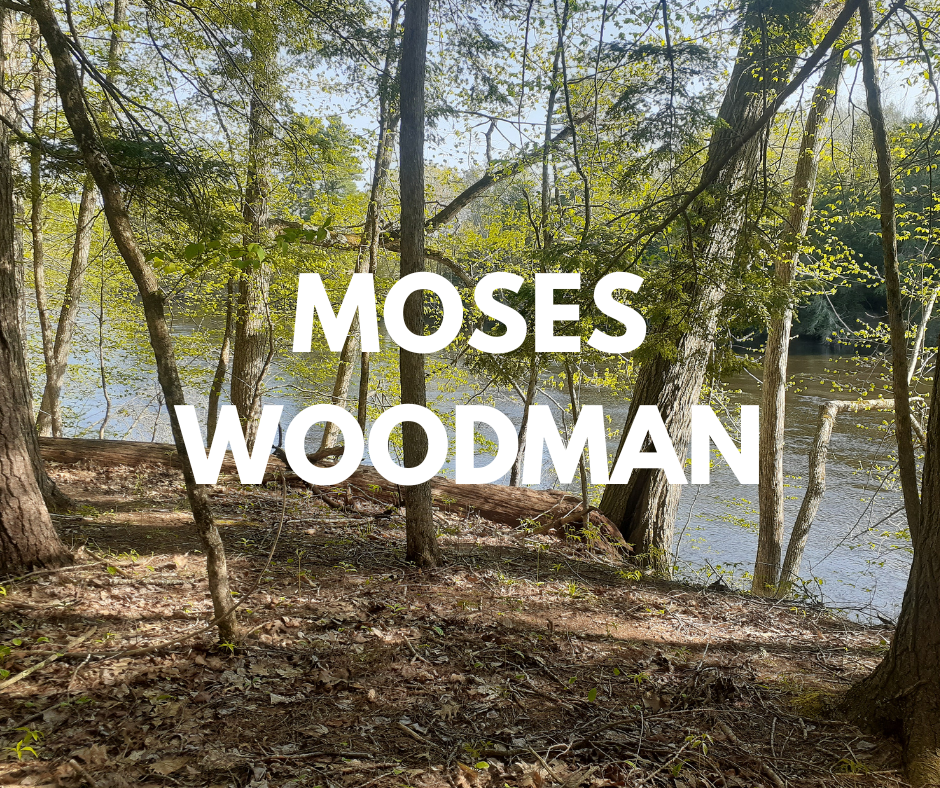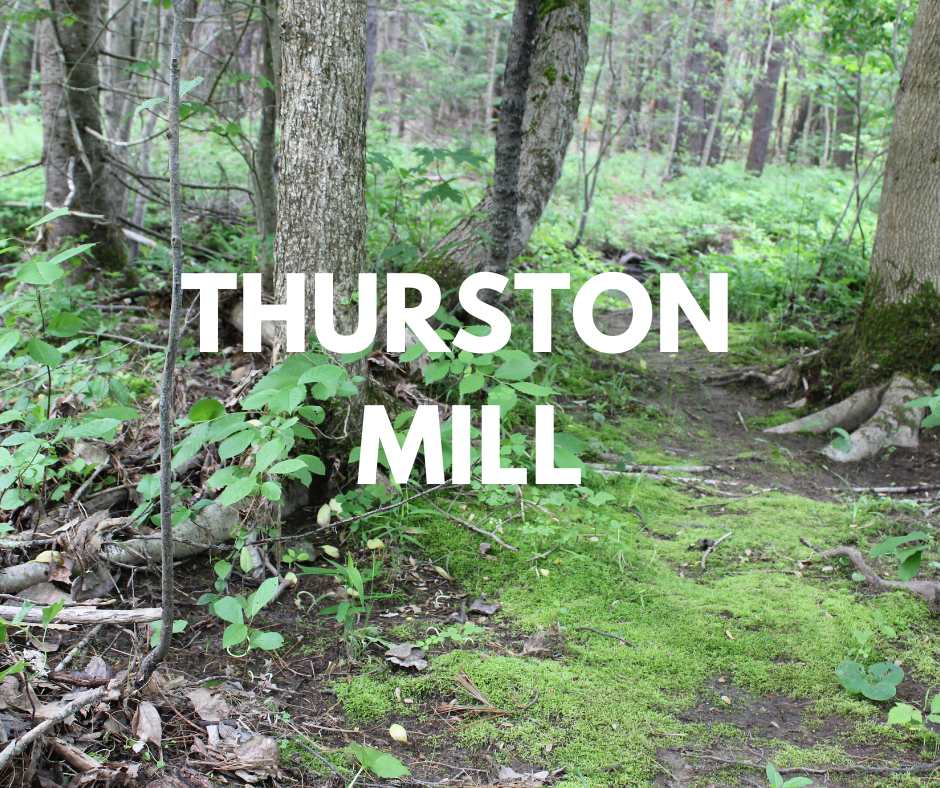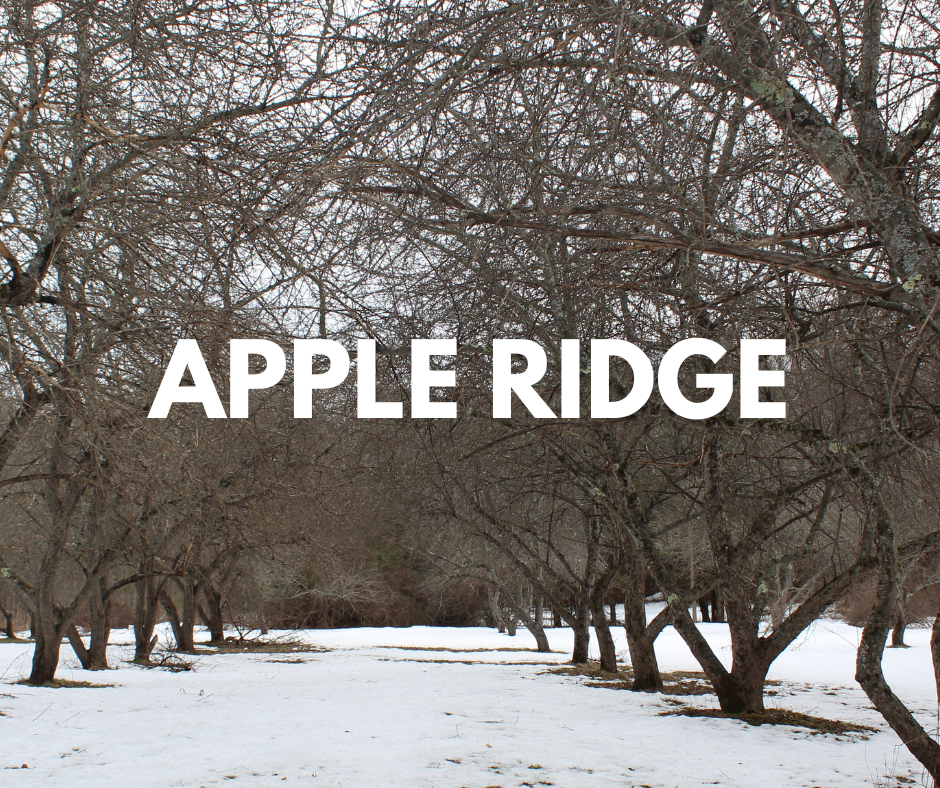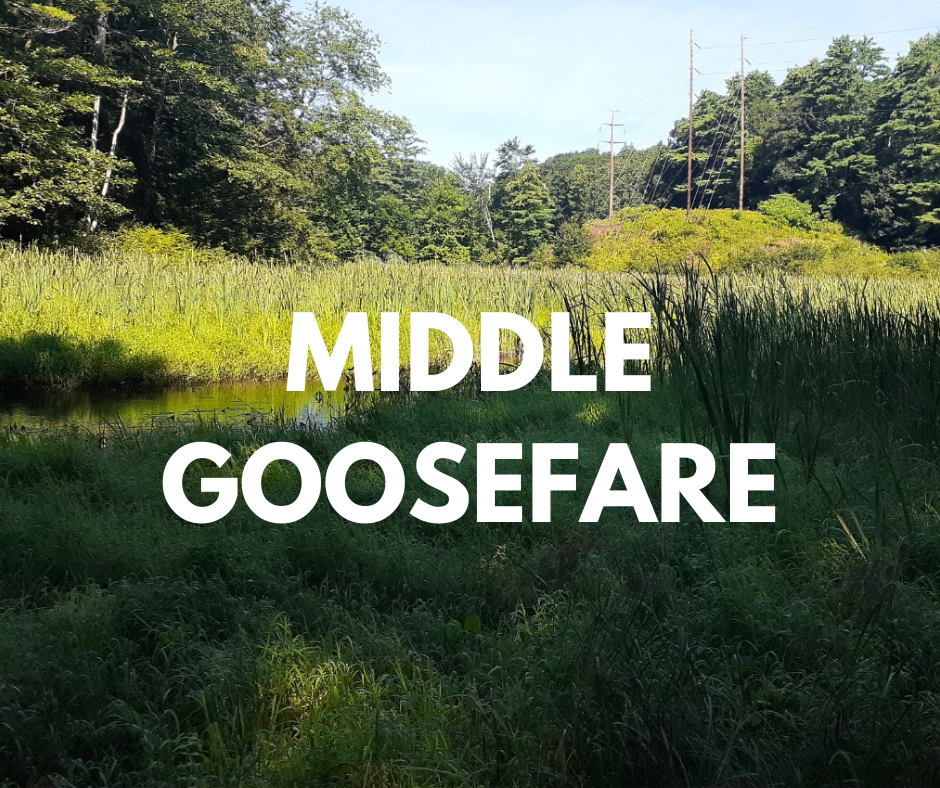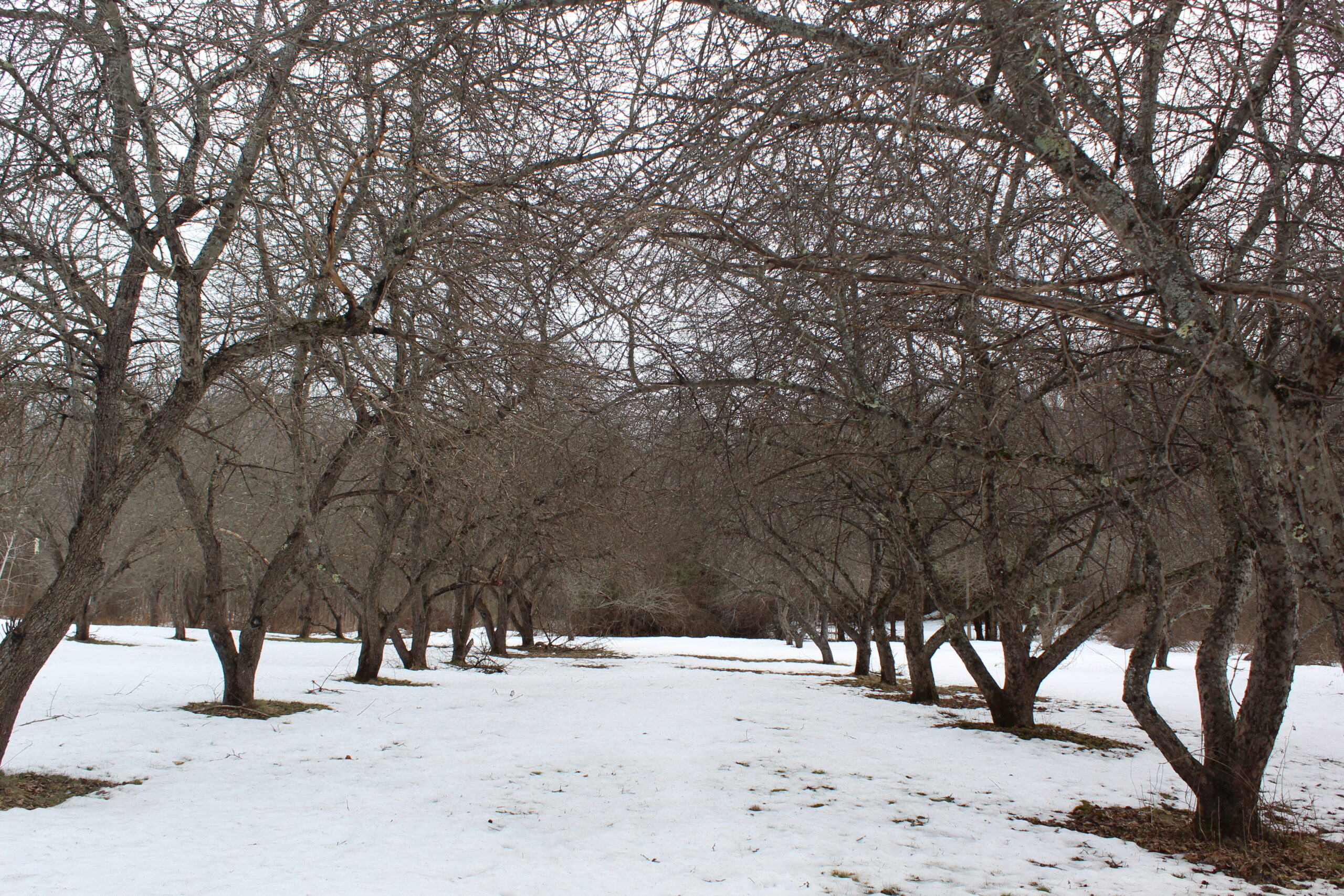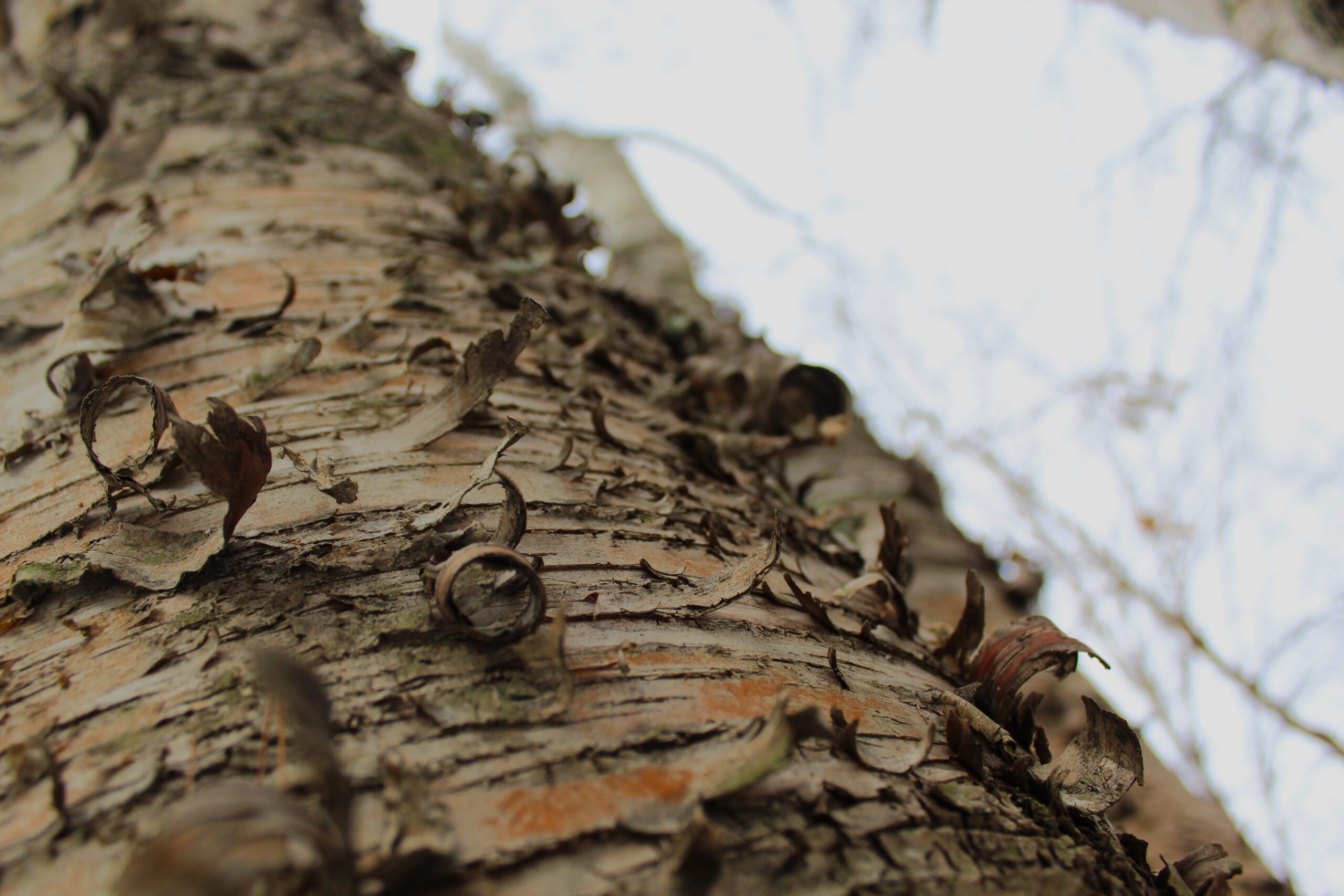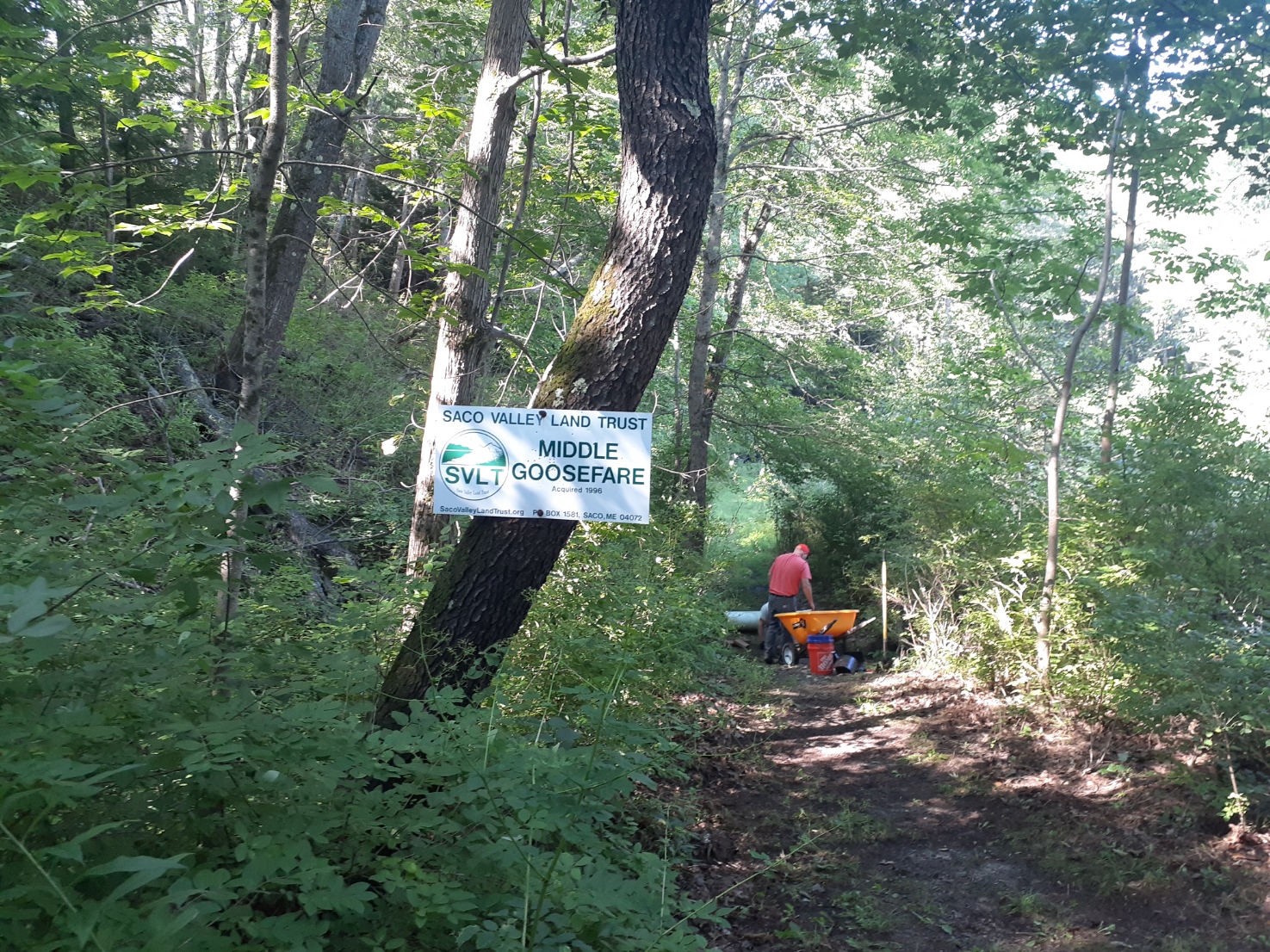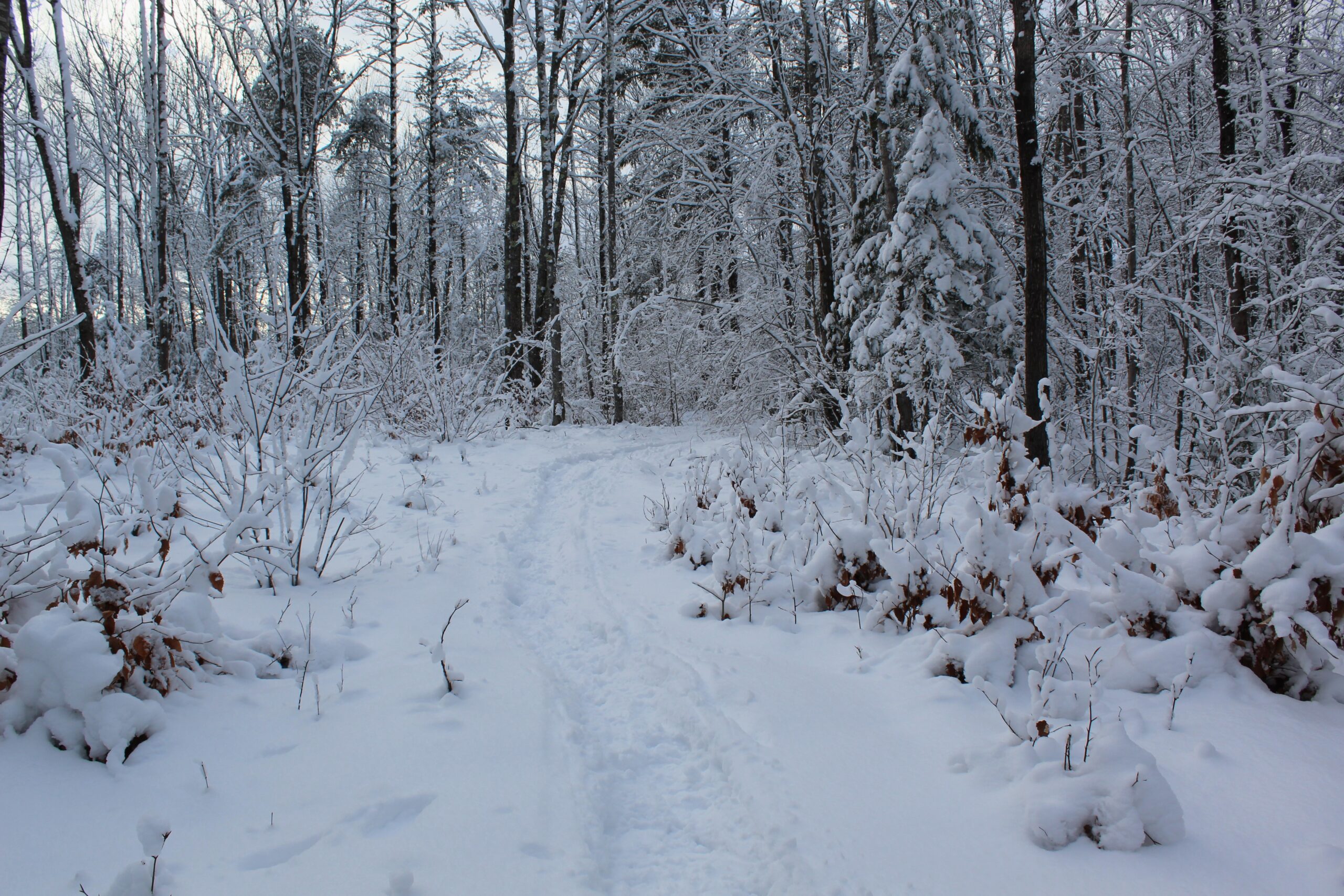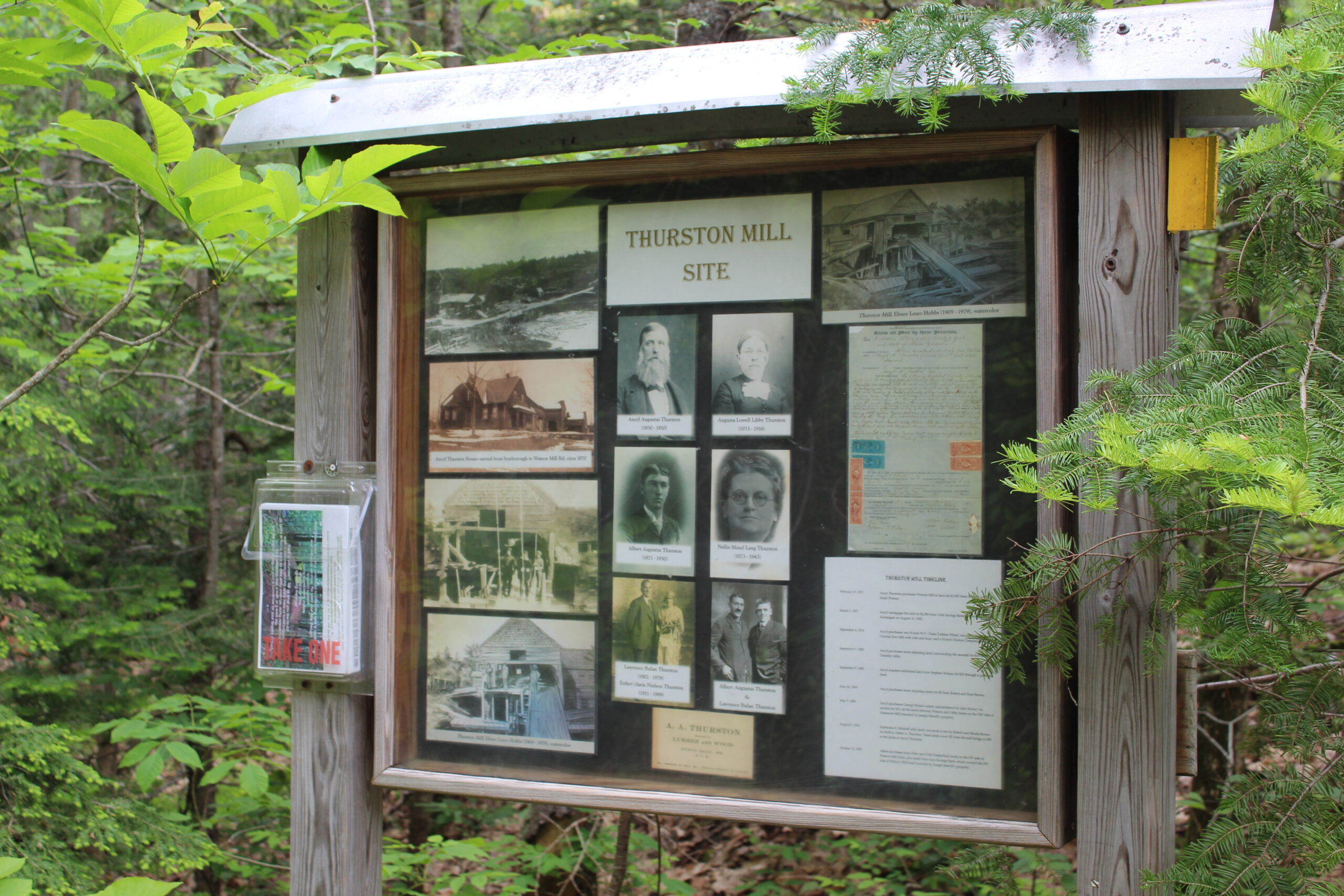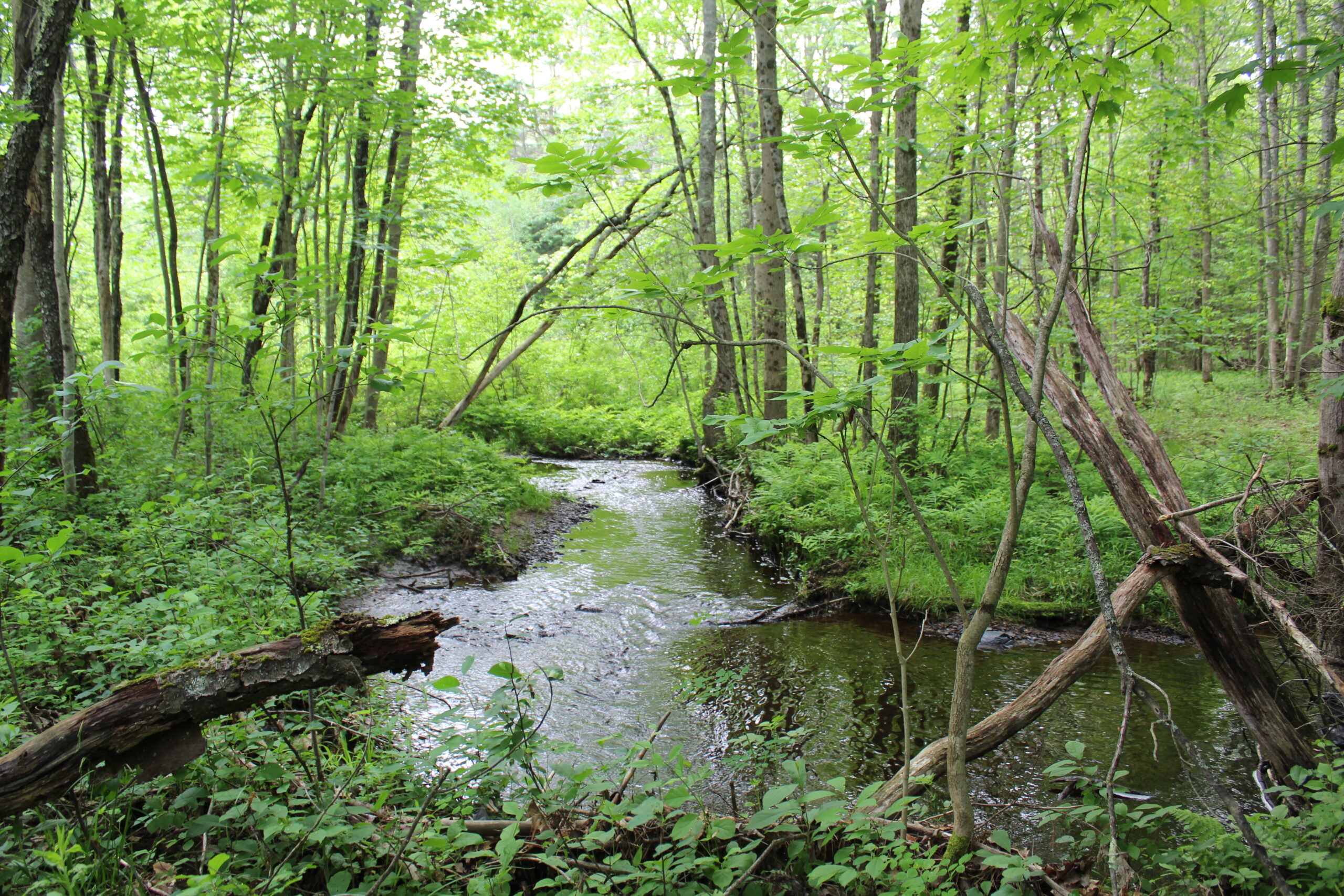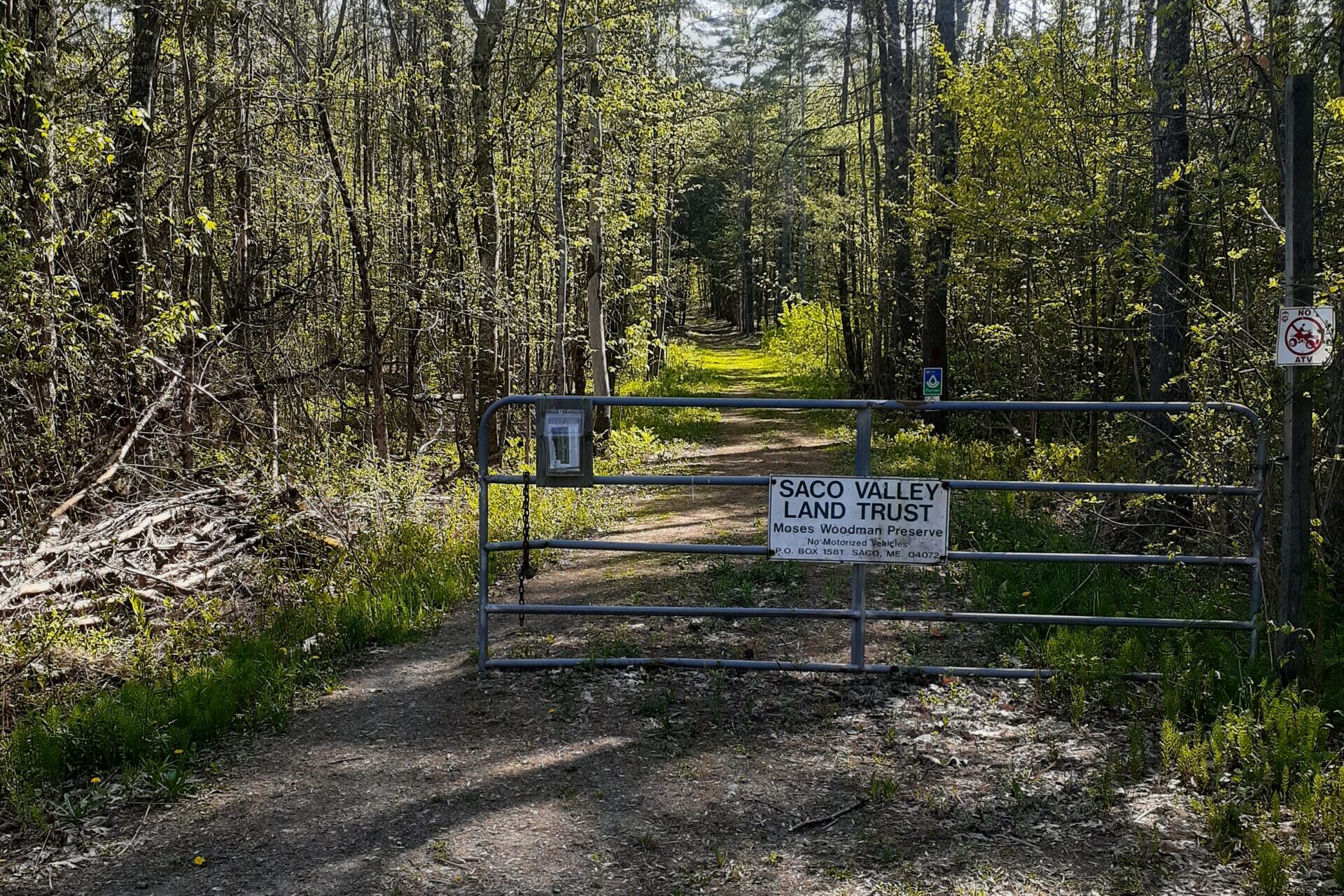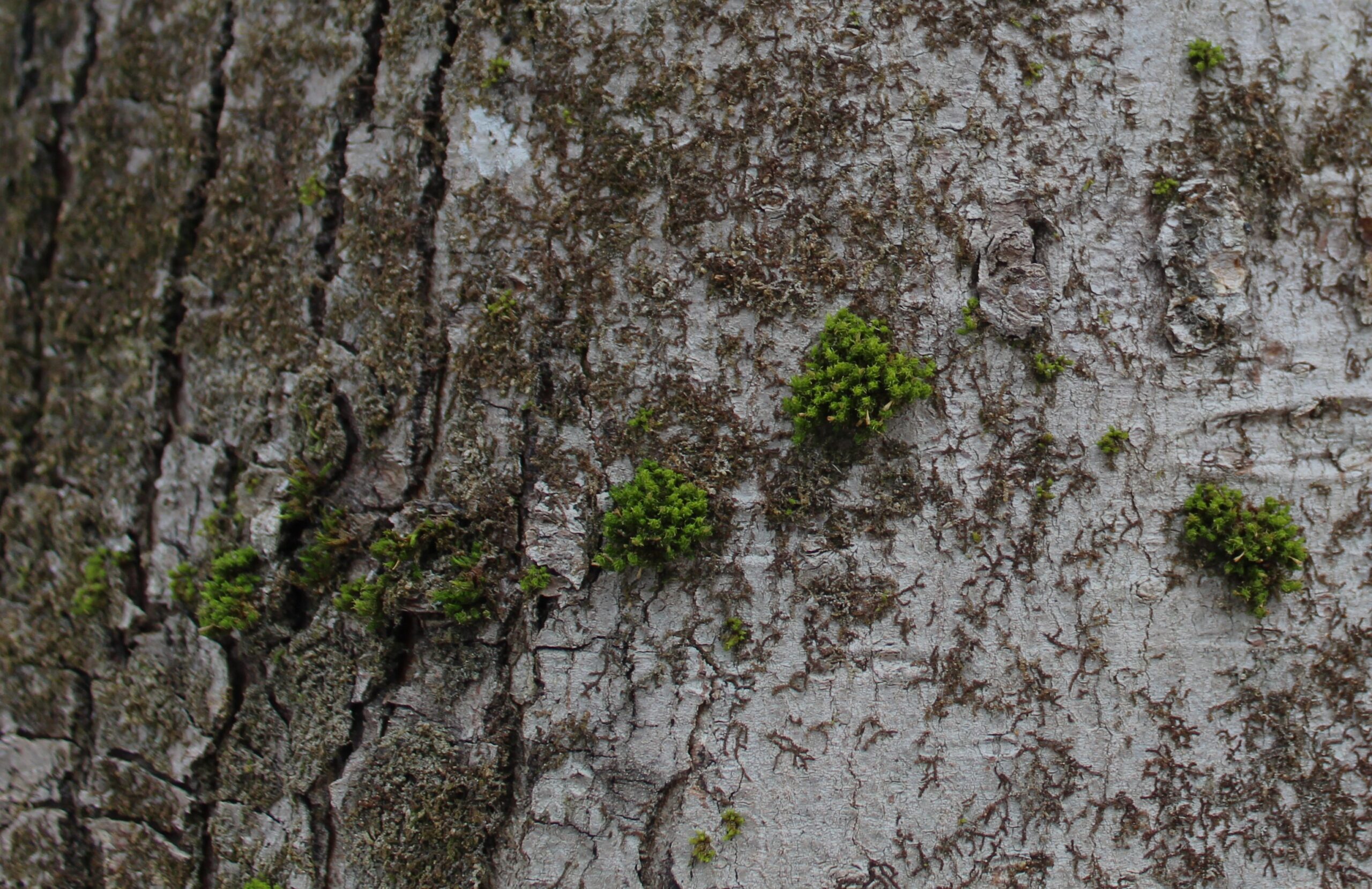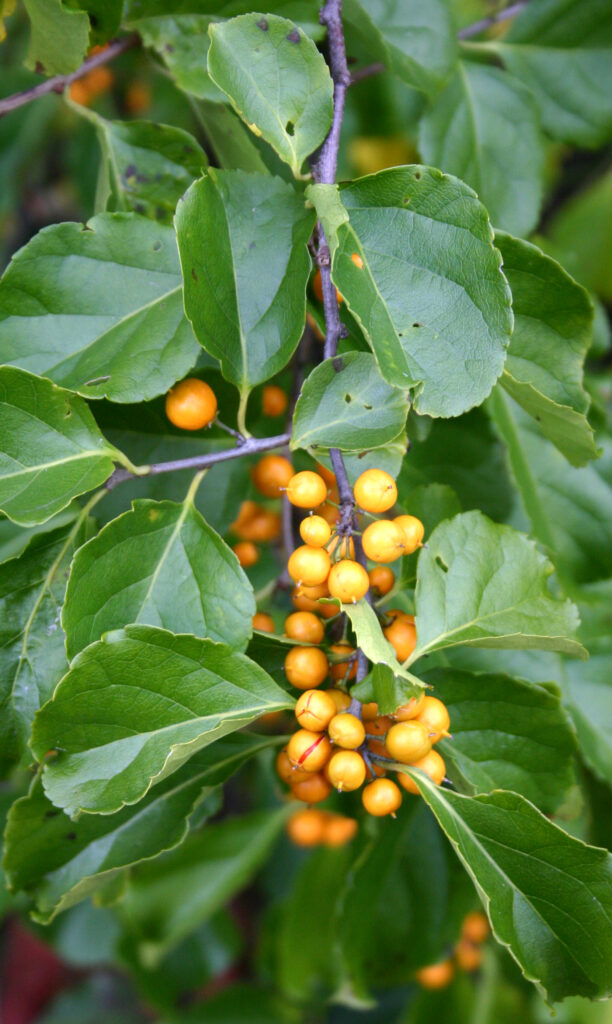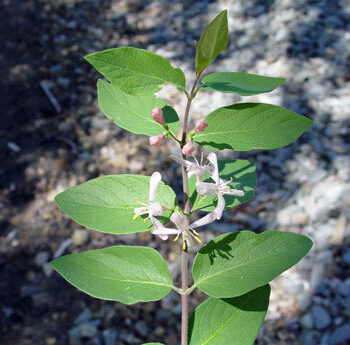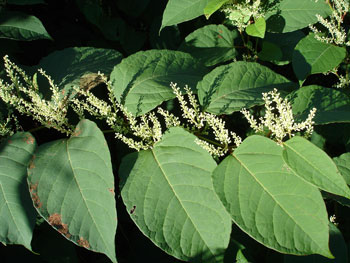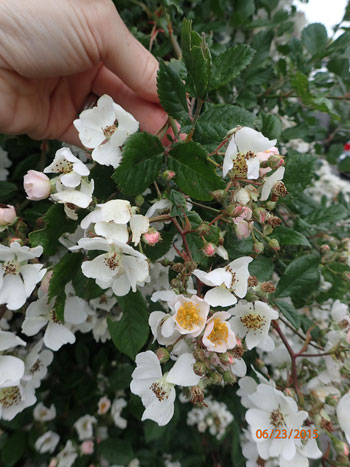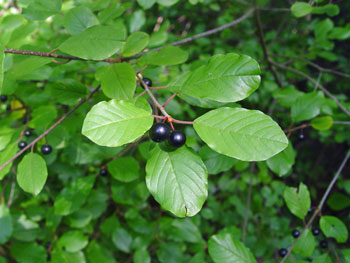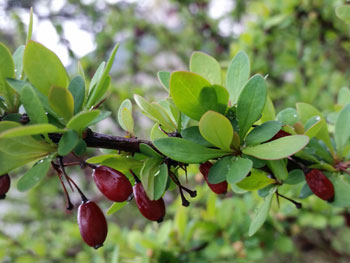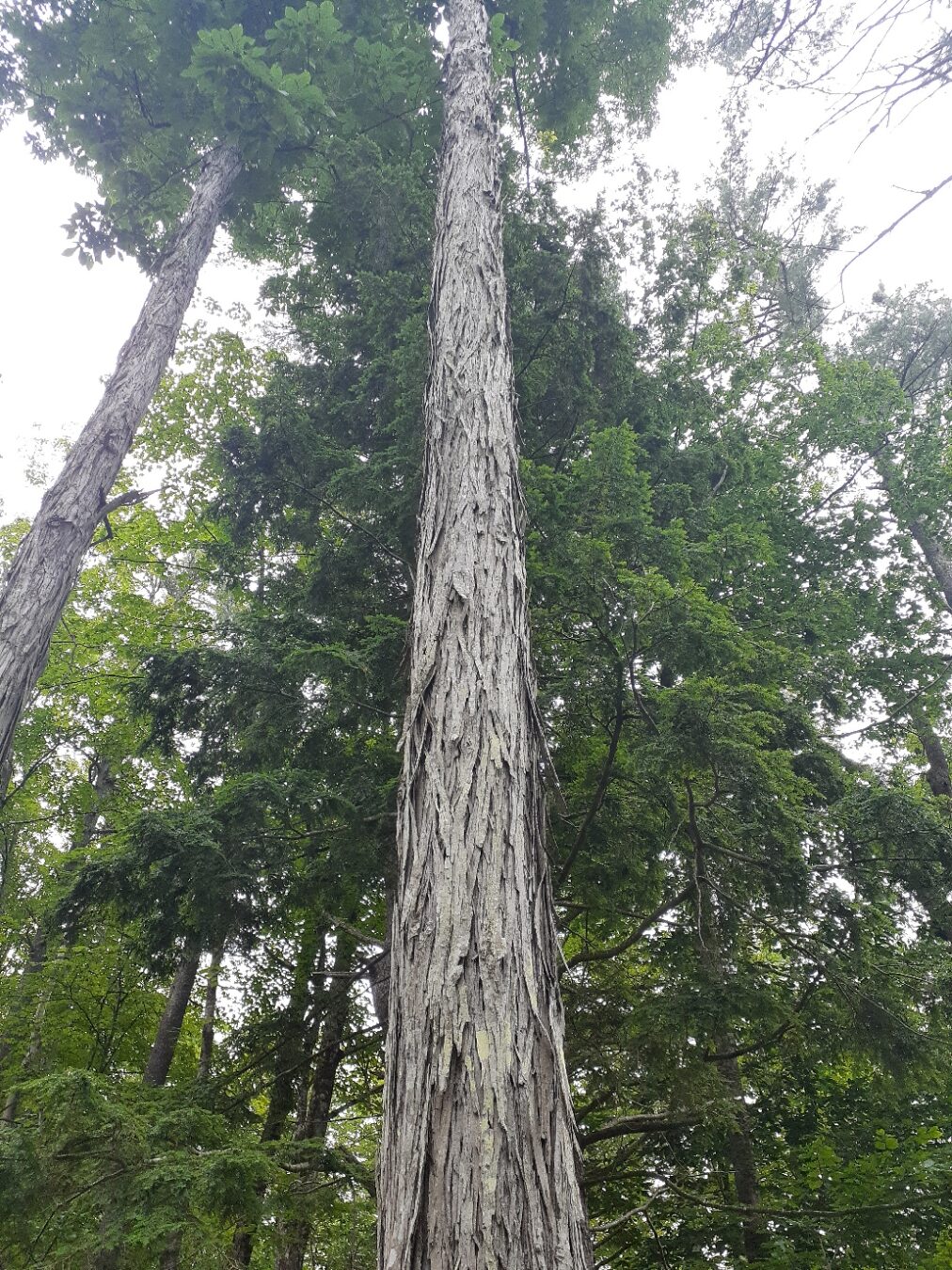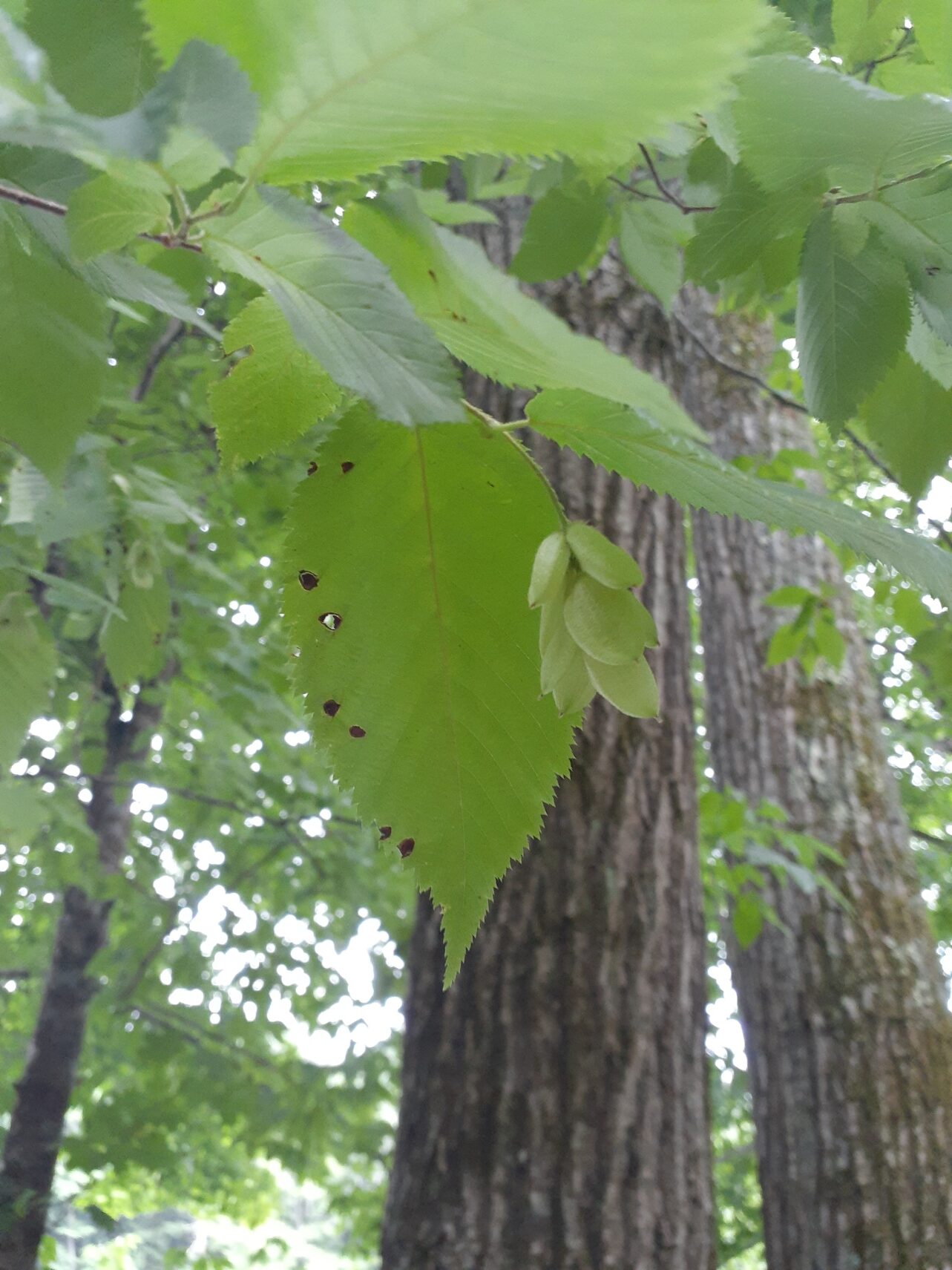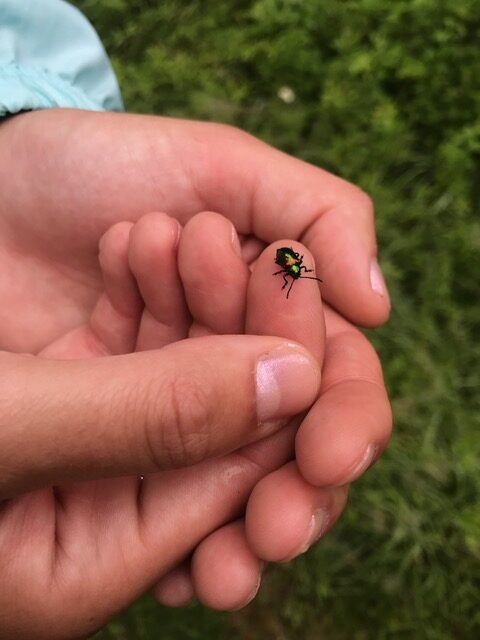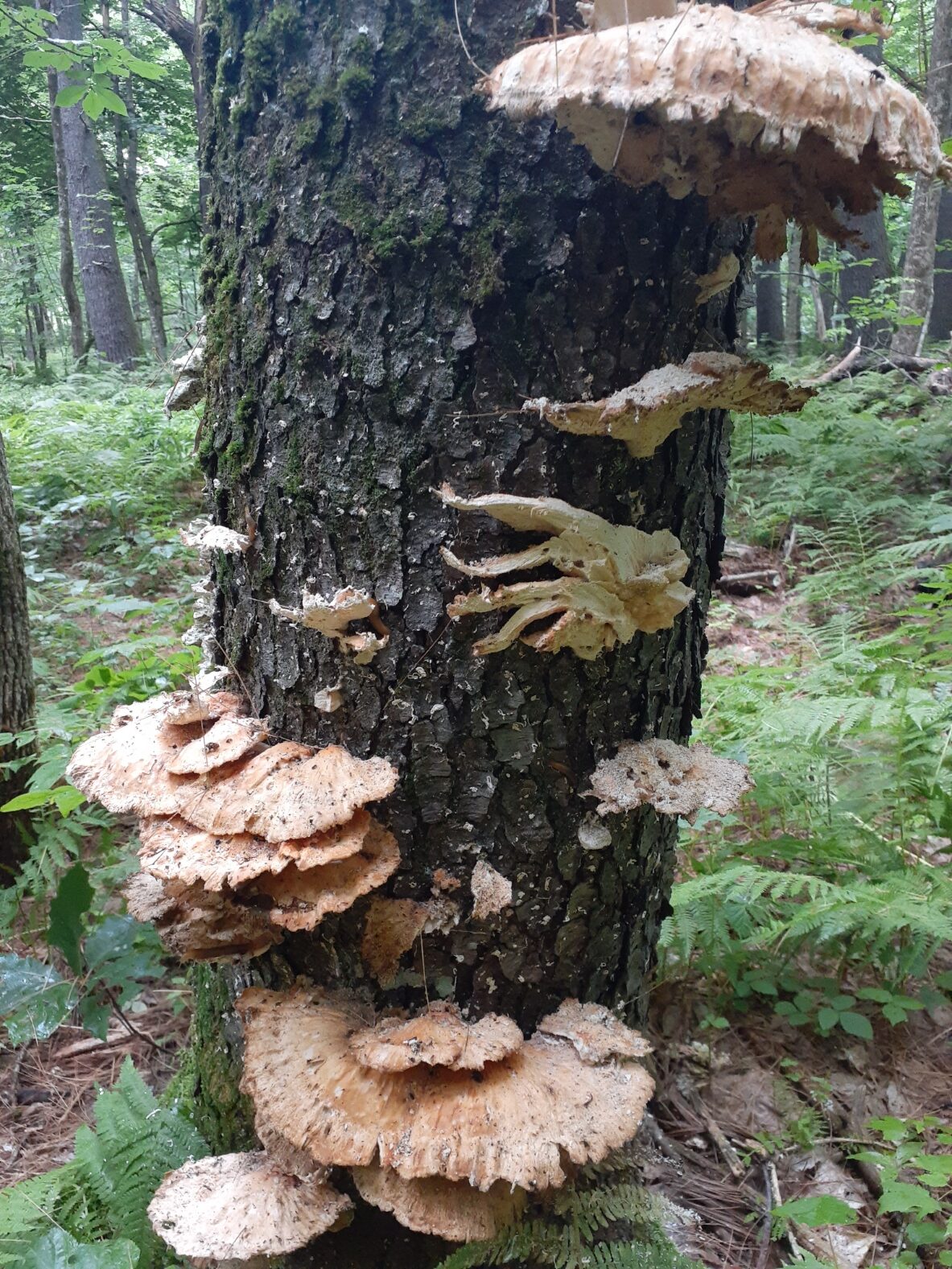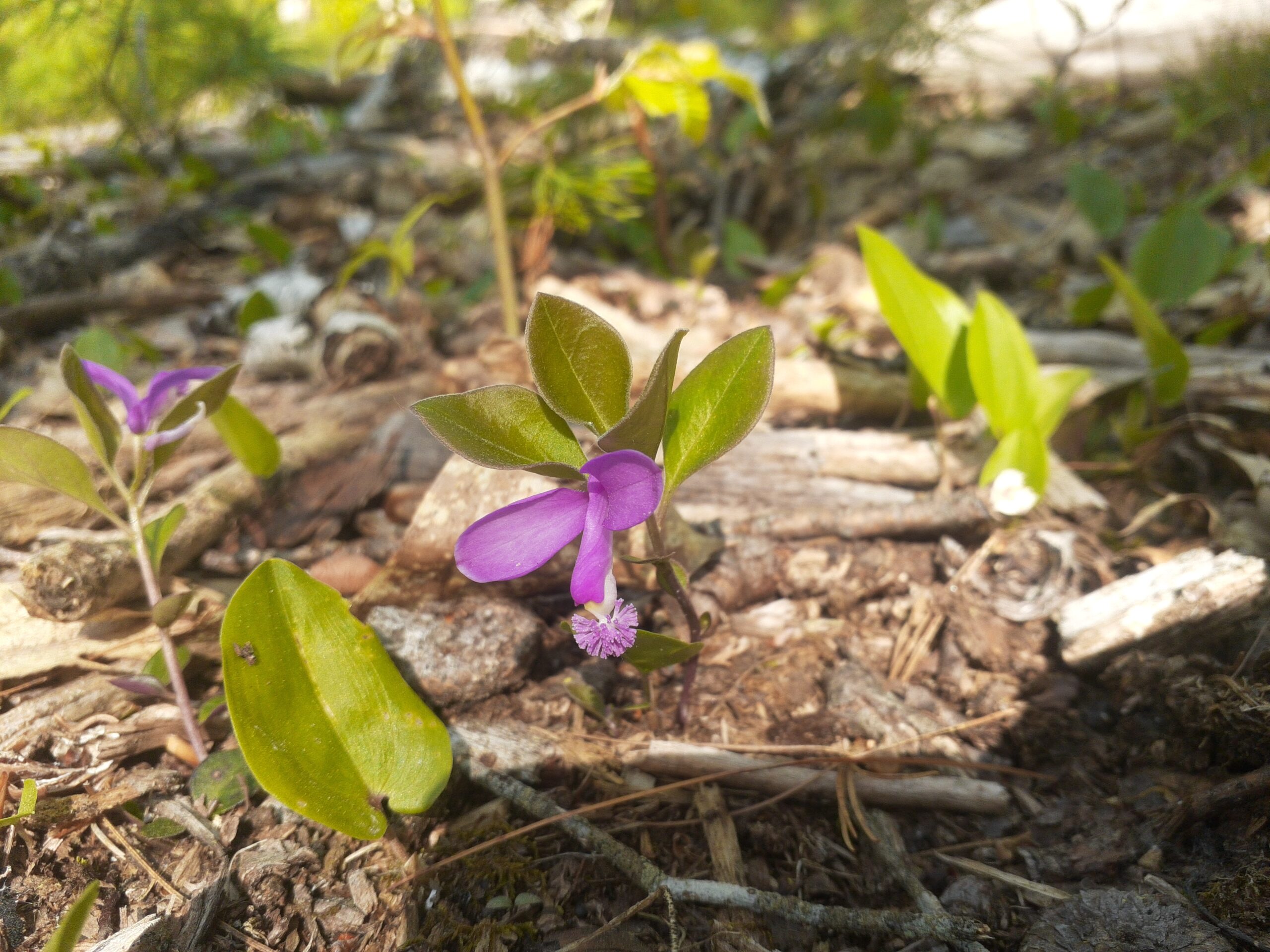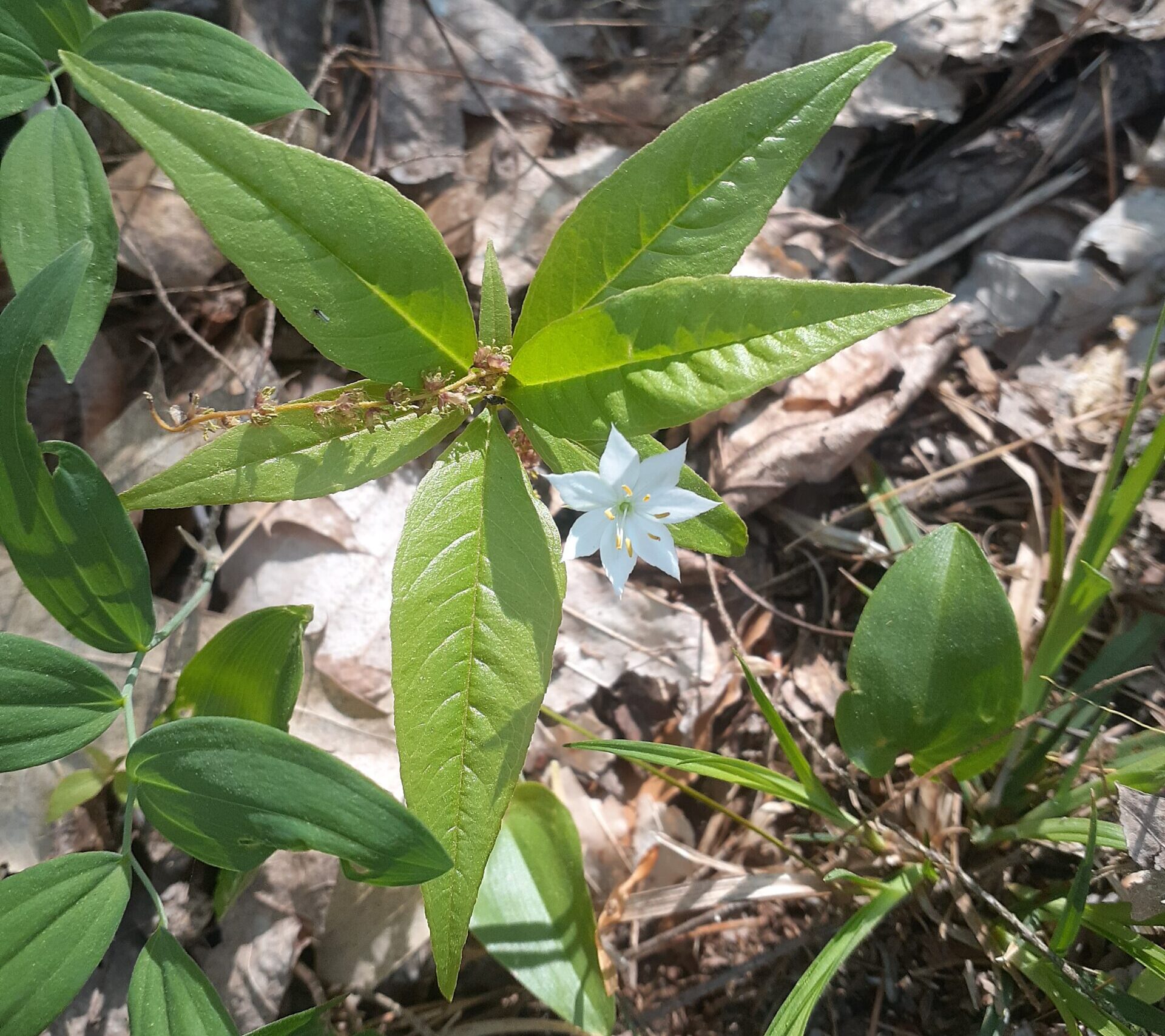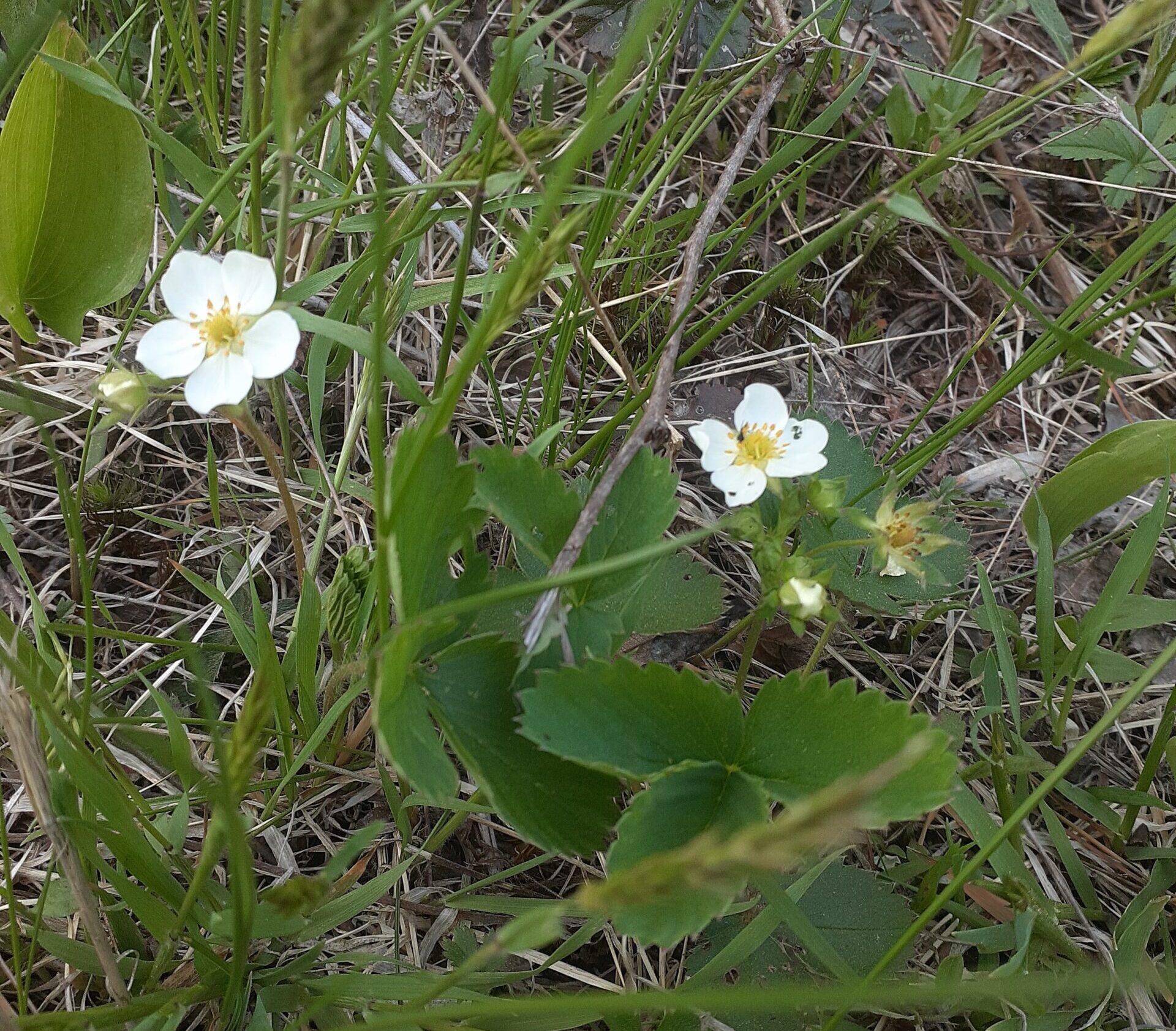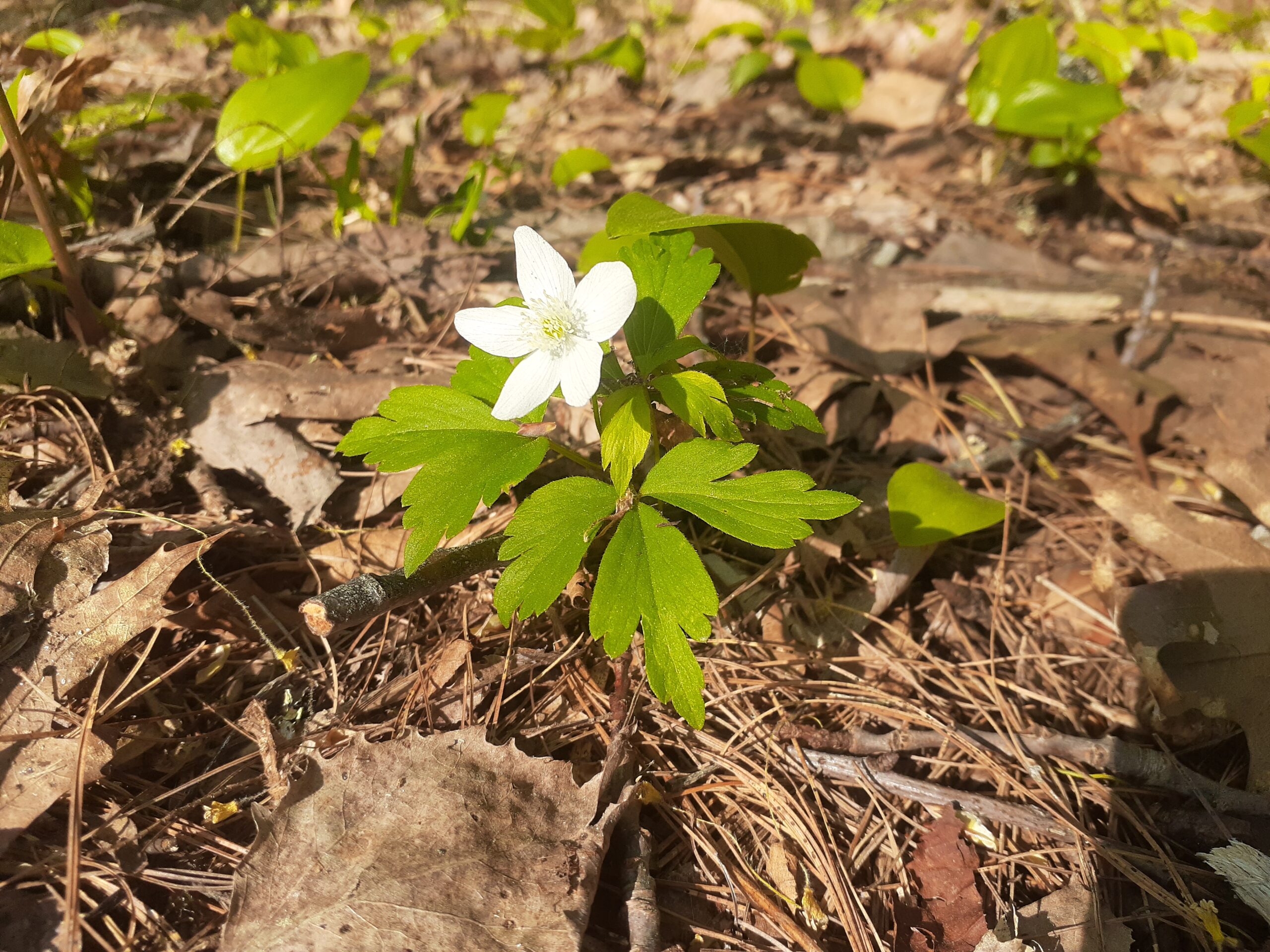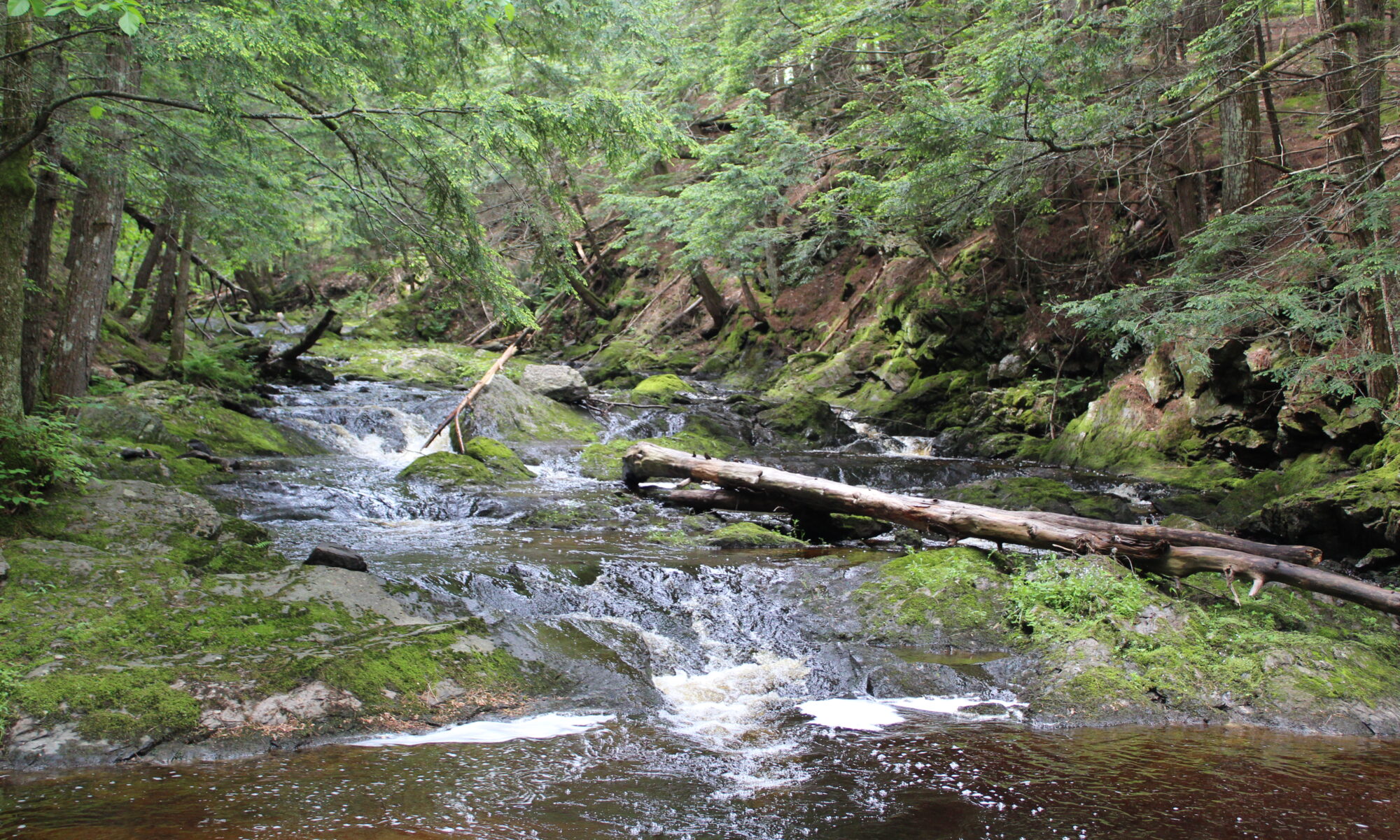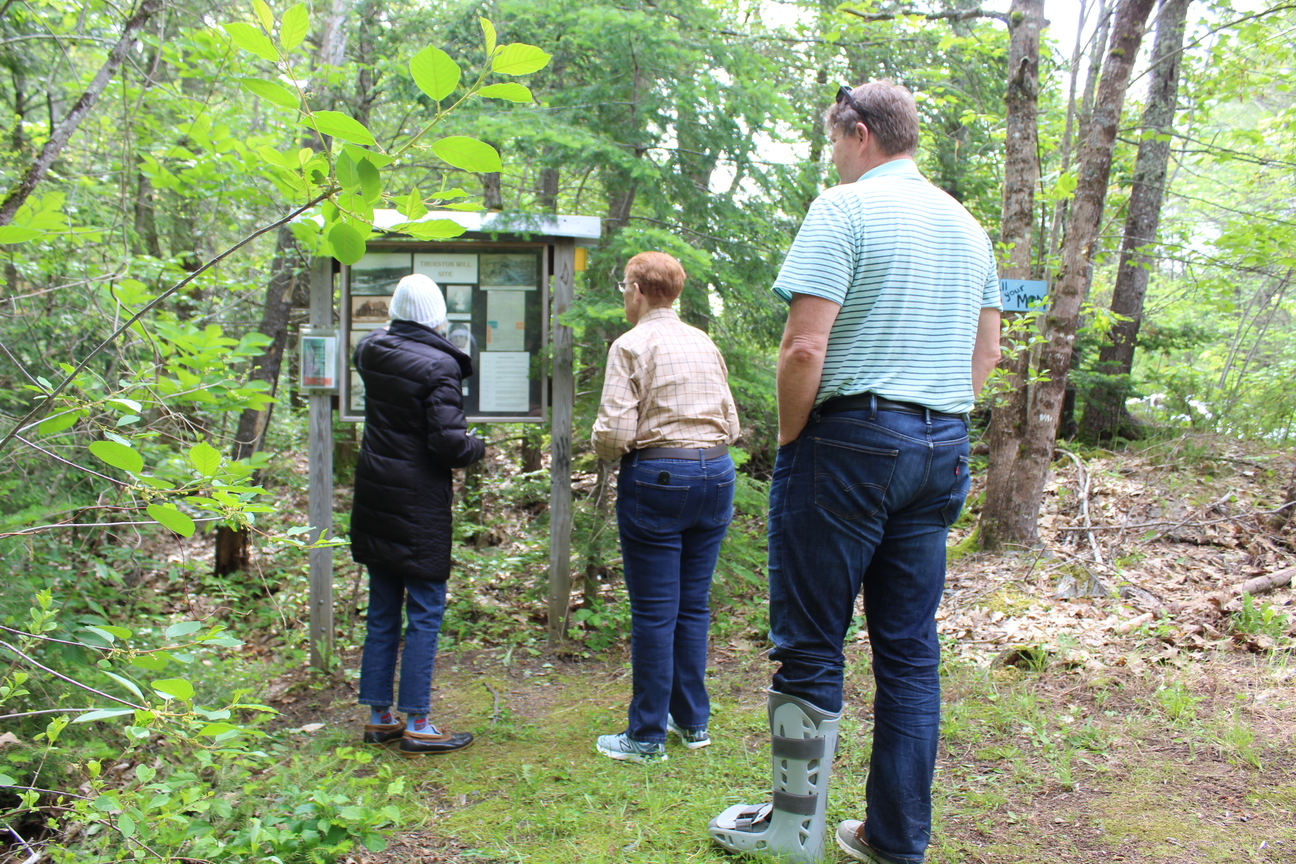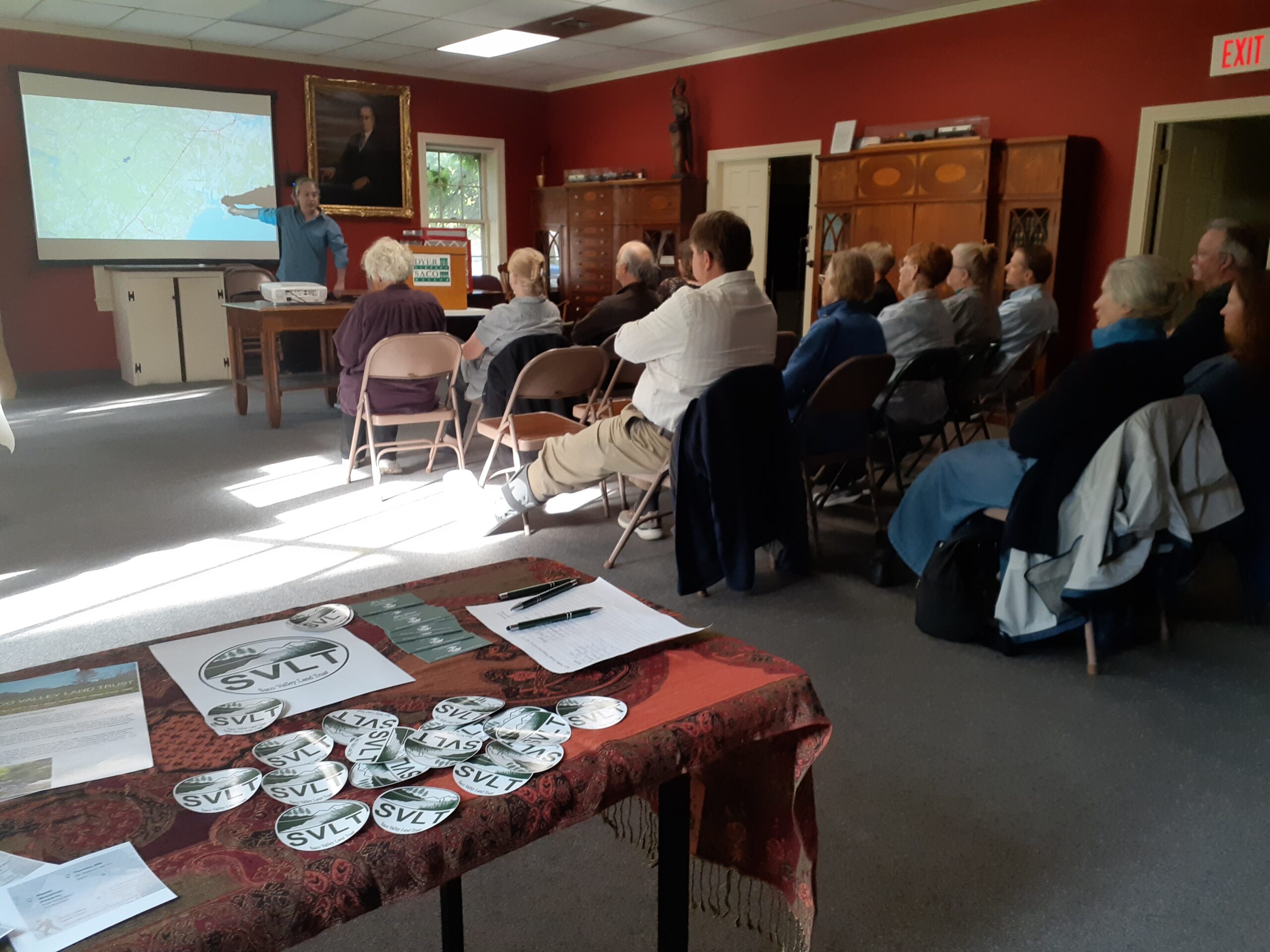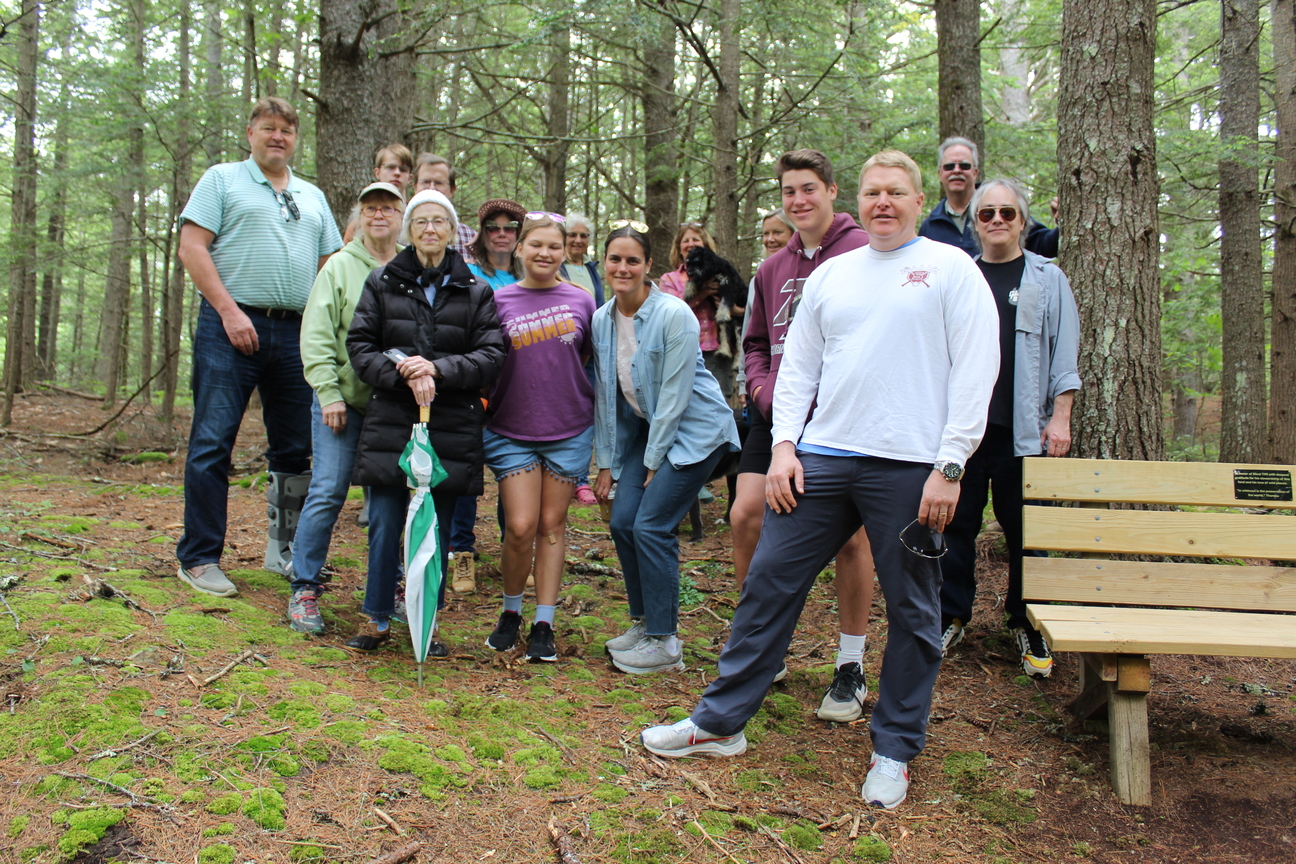While many people are spending time on the trails in the summer, land trust stewardship takes place 12 months of the year. Board of directors and volunteers may not spend as much time on the properties in the winter months, but we have ongoing projects throughout the year.
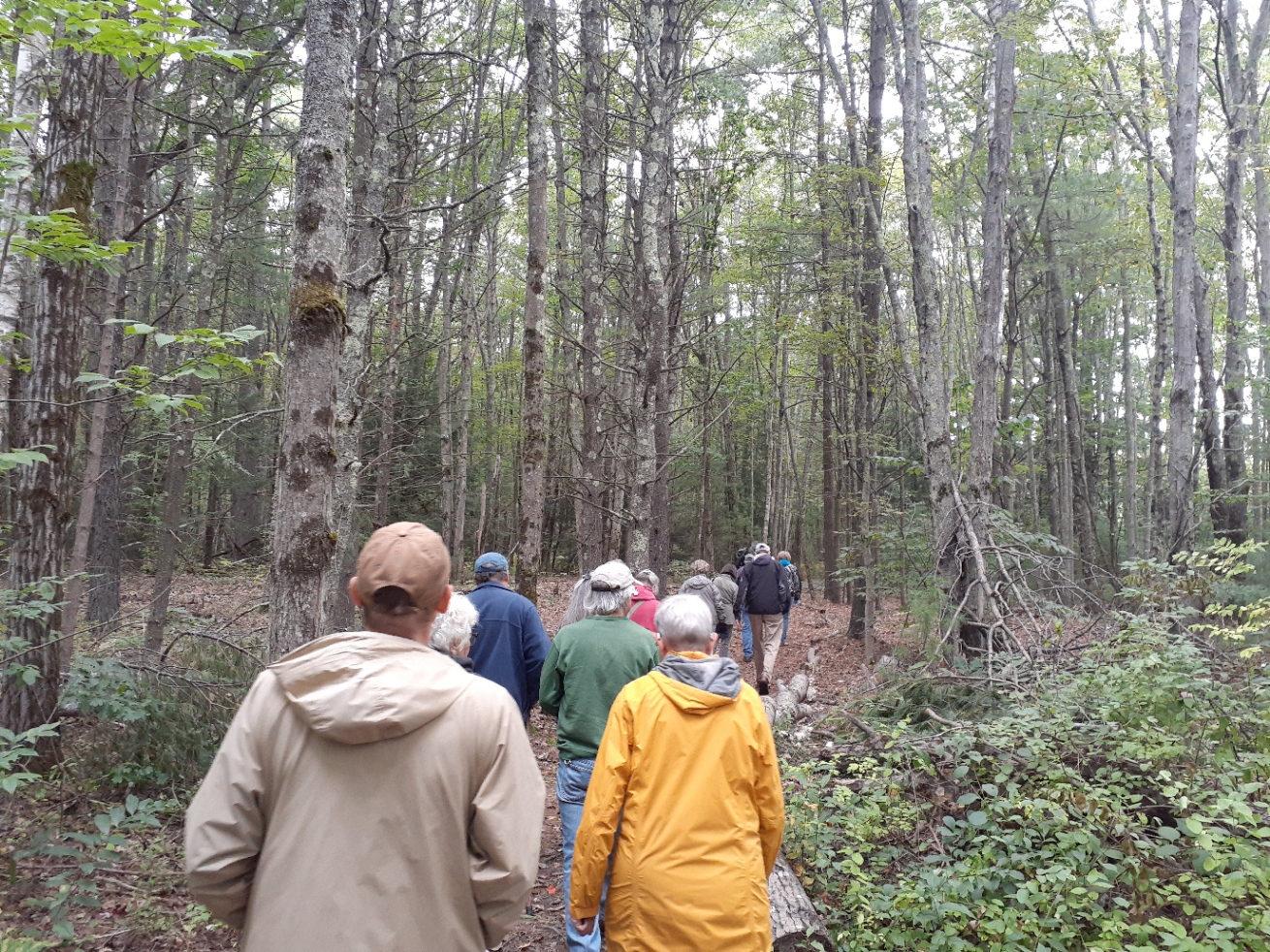
We focus on keeping our trails clear for people to use in all seasons. We offer educational walks and talks. People recreate by hiking, fishing, hunting, snowshoeing, and skiing at our properties.
Remember that not all conserved land ais open to the public. Check out the best places to visit HERE.
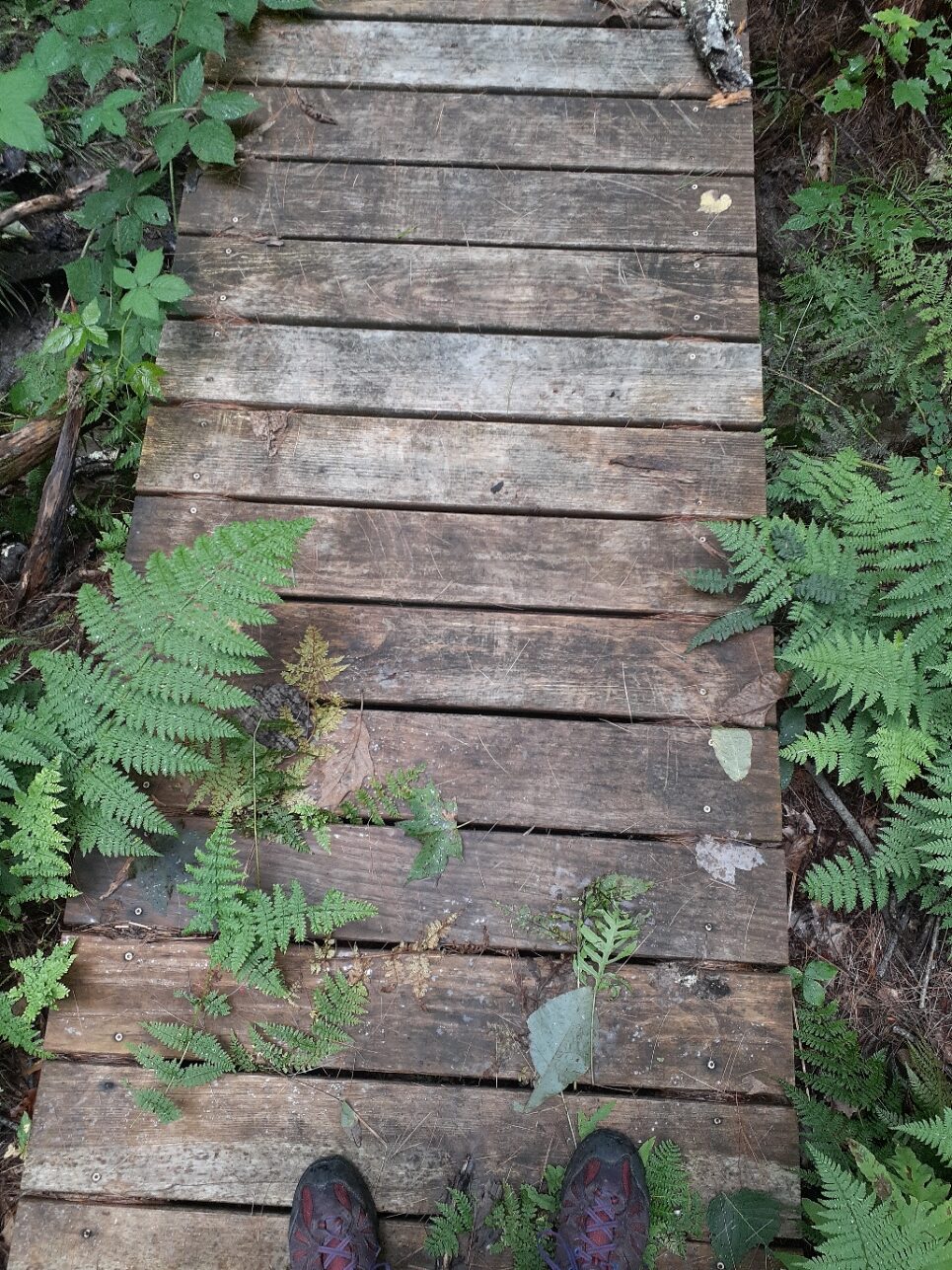
This takes consistent, year round care from dedicated land trust volunteers. We offer trainings and work days so you too can help out on the trails! Check out our volunteer page to learn more.
The places that are not open to the public are maintained for other reasons such as ecology and habitat. Here are the primary reasons we conserve land:
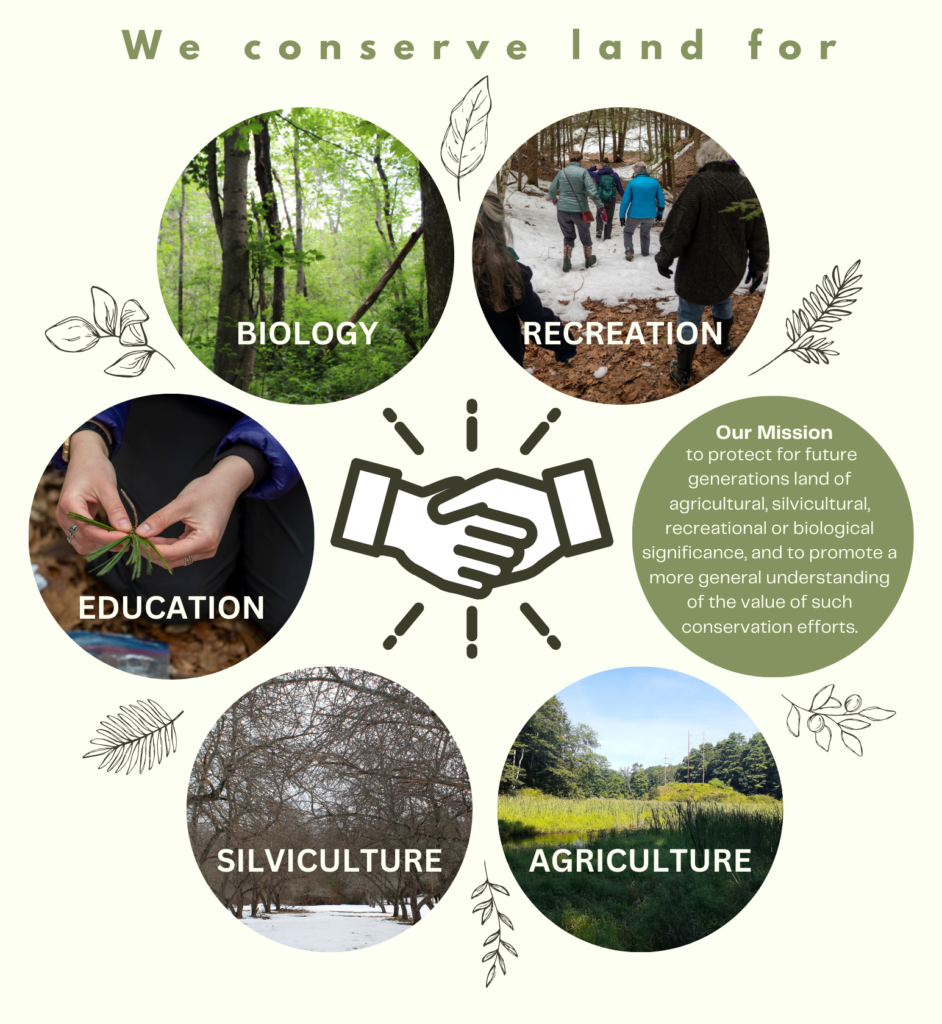
There are properties which are reserved for the growing and harvesting of trees or crops. Did you know SVLT owns a very old apple orchard in Saco? Check out the Apple Ridge donation. And by the way- we are looking for a volunteer to mange this patch of trees!
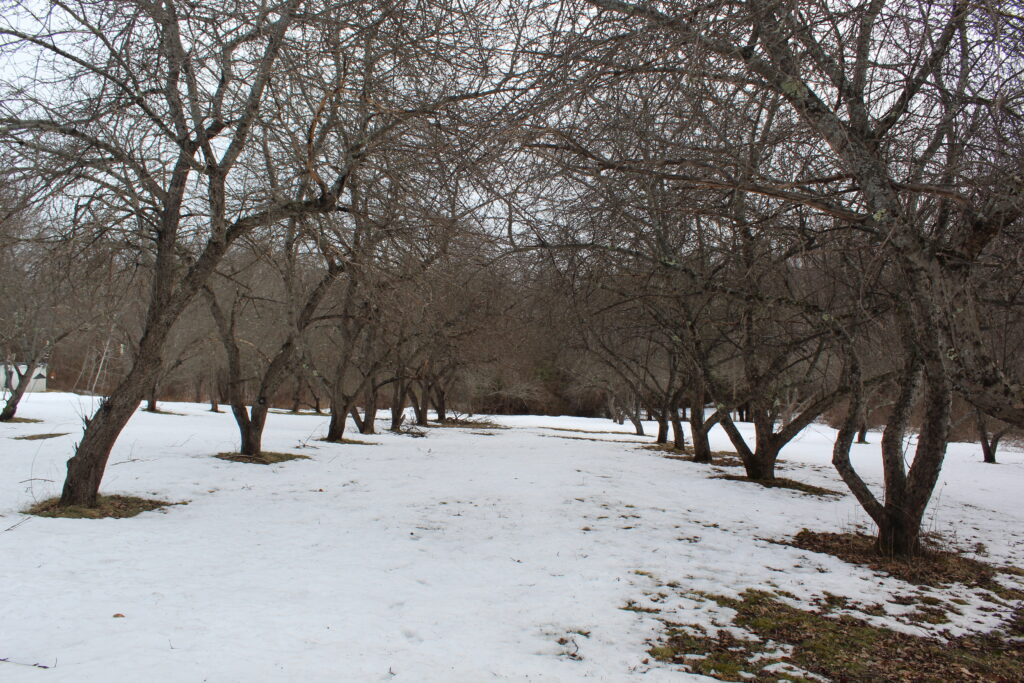
Biology and ecology is a major reason to conserve land. Some of these habitats can be left alone, becoming forever wild old-growth forests. However, some of the land is managed as wildlife habitat.
For example, New England Cottontail is a vulnerable species according to the International Union for Conservation of Nature (IUCN). which means it’s population is decreasing rapidly. There are government initiatives to create habitat in Maine that is suitable for the rabbits. This leads to altering the forest and promoting the growth of shrubs that are preferred by the animal. Learn more about this on the Maine Inland Fisheries and Wildlife website.
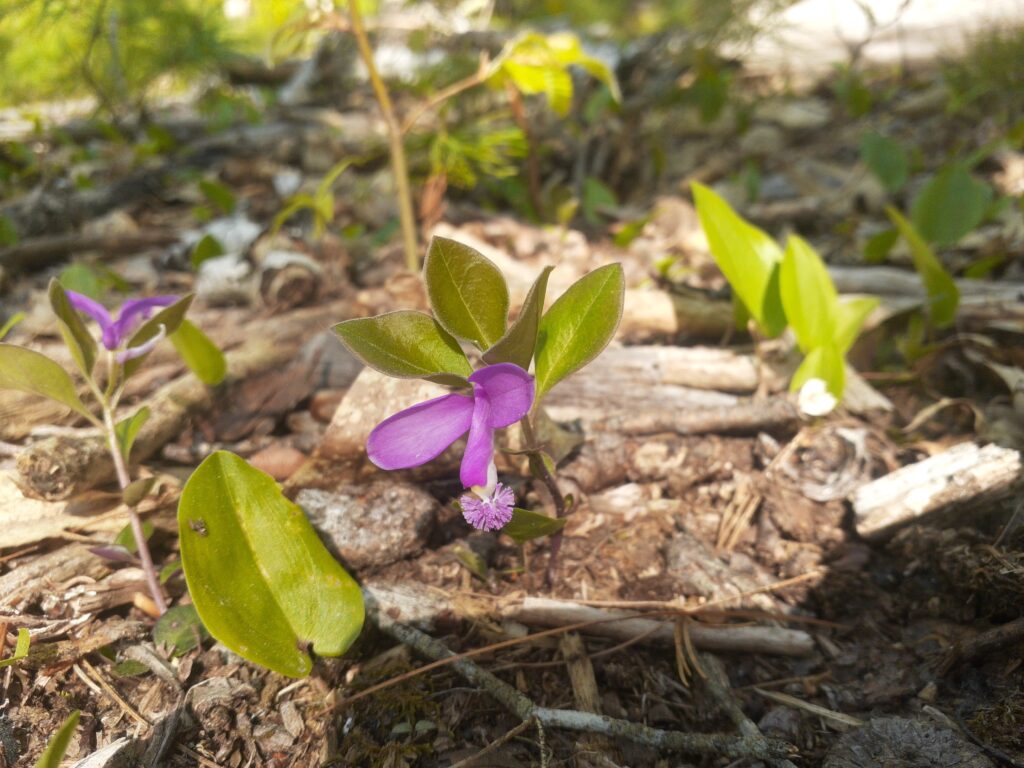
The land trust will adopt some of these maintenance measures to ensure the land is being conserved properly.
Land that is not owned by SVLT but is managed by the trust is protected under conservation easements. These easements require inspection to make sure the owners are properly managing the parcel.
Sue Littlefield (SVLT board of directors) says “Easement monitoring is required yearly, by Land Trust Alliance standards (the national accreditation organization). Each year the landowner is contacted and usually chooses to accompany the monitoring team while they visit the property. Depending on the wording of the Easement, the team will note recent farm and forestry practices, new farm buildings, fencing, roads, etc. The team and the landowner can discuss future plans and how they would honor the goals of the Easement.”
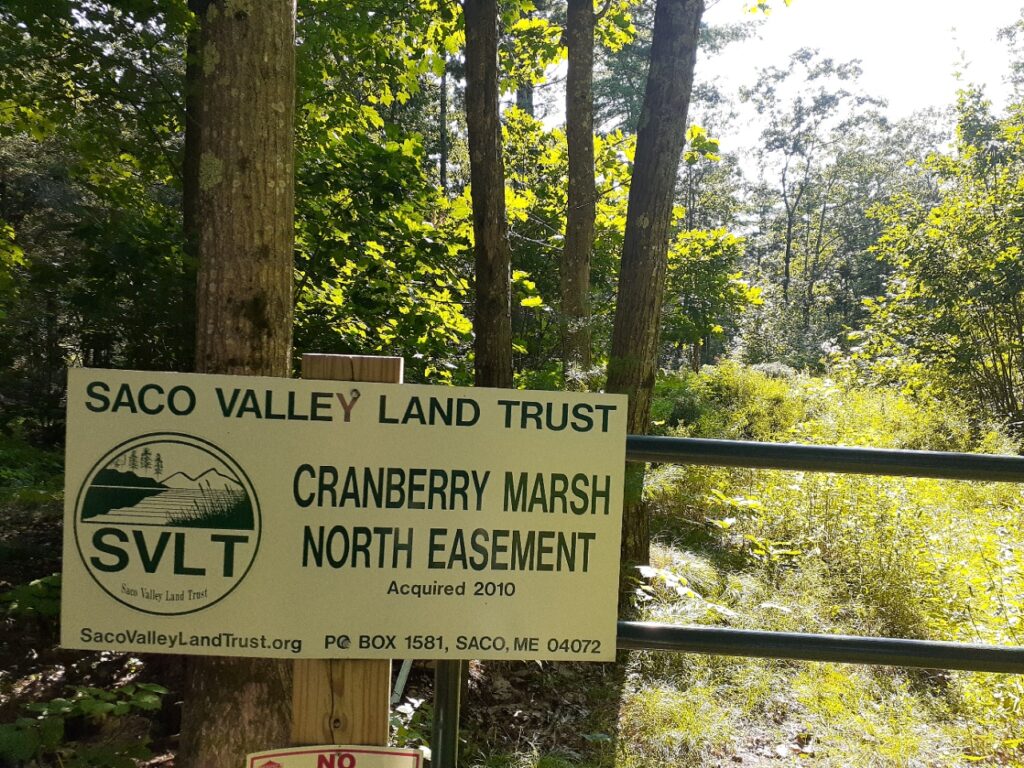
Each property we protect is carefully surveyed and its boundaries are marked, even those we own. Littlefield says” “Land owned by SVLT is monitored at least every three years. We usually cruise boundaries to refresh flagging and check for encroachment or misuse, and follow any trails or visit environmentally sensitive areas.”
Boundaries also serve as a physical place to return to so we can keep track of the property and understand how it changes over time.
Littlefield says boundary markers “keep the people who are using our properties from accidentally ending up on an abutter’s. It reminds abutters that SVLT does want to provide responsible public use, and helps those wandering in the woods to realize that they are entering SVLT land.”
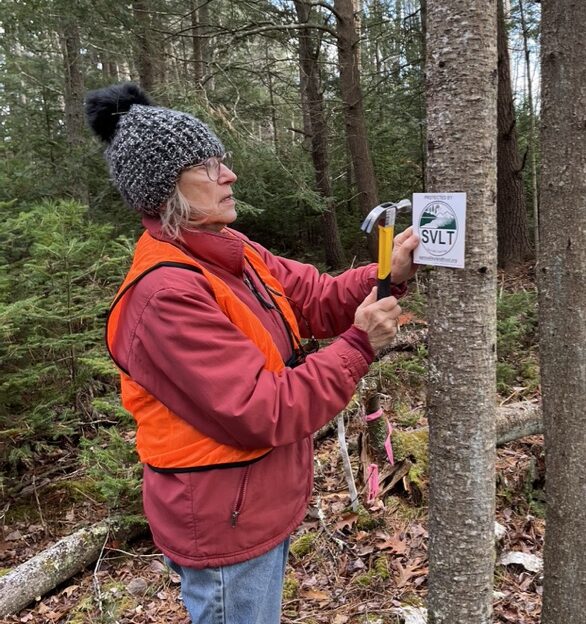
Volunteer Janice Goodrow adds a boundary medallion to a tree at a property in Biddeford.
Volunteers help us boundary mark, clear trails, monitor easements, and overall help us steward the land- all year around. Thank you volunteers!
Photo credits (from Top to Bottom): September History Walk, Boardwalk with Ferns at Woodman, SVLT Mission Graphic, Apple Ridge, Fringed milkwort, Cranberry Marsh North Easement by Abby Wilson; Volunteer boundary marking and Pond and trees header image by Janice Goodrow
